Campobello – Franklin Roosevelt’s Second Home
Many years ago I watched a movie called Sunrise at Campobello which left an indelible impression on me. I had no idea that Franklin Delano Roosevelt, who I consider one of the greatest of American Presidents, had an intimate connection with Canada and in particular the island of Campobello, New Brunswick. I made of point of visiting Roosevelt Campobello International Park not long after watching it, but had not returned until recently when I was privileged to visit New Brunswick’s fabulous Fundy Isles. Alison and I spent three nights on Grand Manan where I went sea kayaking and we both went whale watching and museum going before returning to the mainland. From there we made the short drive to Letete and took the free public ferry to Deer Island and then the private ferry to Campobello. Please join us as we as we visit the site which FDR considered his second home. But first, have a look at this trailer from the movie to get an idea of why Campobello is such an important international destination.
History of Campobello
Campobello is not the type of name you would ordinarily associate with a New Brunswick coastal island, being not English, French or Aboriginal. It was given the rather romantic sounding title by a certain Captain William Owen who was granted the island in 1770 by Lord William Campbell who was the Governor of Nova Scotia which then encompassed what is modern day New Brunswick. The new name was a sop to Campbell and an enticement to new comers. I mean who wouldn’t want to settle in a place as nice sounding as CAMPO – BELLO.
If you look at a map, most of the Fundy Isles are actually closer to Maine than they are to mainland New Brunswick, especially Campobello which is literally only less than a kilometre away from Lubec, Maine to which it is connected by a land bridge. To get there from New Brunswick you need to take two ferries as we did. While most people call the War of 1812 a draw, in the case of Campobello we came out the winners. The British occupied the island and much of northern Maine including Eastport which is directly across from Campobello, until 1818 when the U.S. agreed that Campobello was indeed Canadian territory.
However, the Americans were not about to let Campobello go that easily. In 1881 James Roosevelt, FDR’s father, and a group of other American investors bought the island and turned it into a summer holiday destination similar to nearby St. Andrews. The railway ran as far as Eastport and from there it was a short crossing of Passamaquoddy Bay to Campobello. James Roosevelt built the first family summer home there in 1883 and it was here that a young FDR spent every summer until 1908. By that time he was a married man and as a belated wedding gift his mother Sara purchased the property next door which is now the main attraction at Roosevelt Campobello International Park. FDR, Eleanor and their five children came here every summer until 1921 when he was afflicted with polio, which first manifested its symptoms while he was on the island. However, contrary to some accounts, he did not ‘contract the disease’ on Campobello. The cause was likely infected water at a Boy Scout Jamboree he attended in New York a couple of weeks before coming to Campobello.
After he became President, FDR returned only three times to the island, but Eleanor and other family members came much more often. In 1952 Eleanor sold the cottage to legendary American businessman Armand Hammer, but ten years later as she neared death, convinced Hammer to deed the property to a joint Canadian American international body that runs it to this day.
With that background let’s go visit this historic place.
At 2,800 acres Roosevelt Campobello International Park is huge and there is much more to see than just the Roosevelt cottage. Unfortunately, we didn’t have time to hike any of the many trails or bike the carriage roads. To really get an appreciation of the entire area I would recommend camping at nearby Herring Cove Provincial Park and taking a day or two to hike and bike to places like Friar’s Head, Mulholland Point and Liberty Point, knowing you are following in the tracks of FDR and his family. This post will concentrate on the Visitor Centre, Roosevelt and Hubbard cottages and high tea at the Adams cottage.
Roosevelt Campobello Visitor Centre
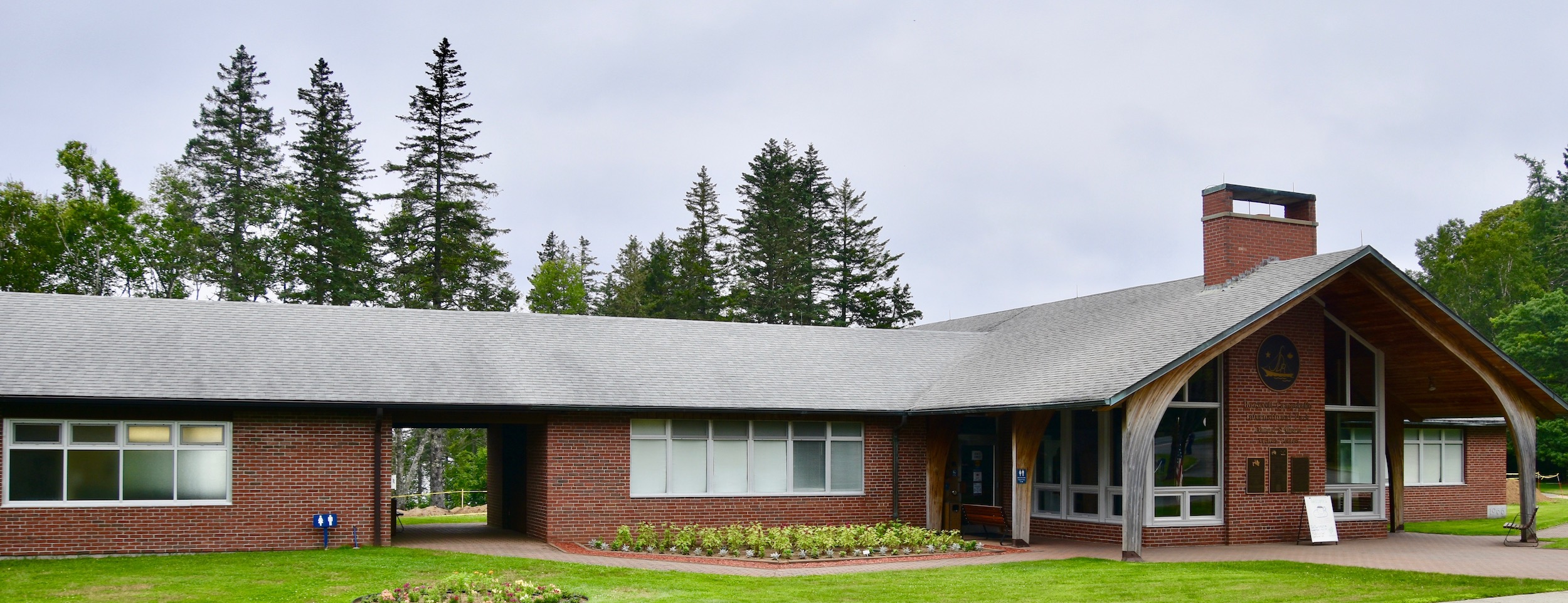
This is the starting point of your visit. Take a look at the plaque near the entrance. Lady Bird Johnson and Maryon Pearson opened the park in 1964. LBJ and Lester Pearson laid the cornerstone for the Reception Centre in 1966 and Queen Mary opened it in 1967. That’s quite an array of dignitaries. What’s interesting is that Johnson detested Pearson after the latter gave a speech in Philadelphia in 1965 berating the U.S. intervention in Vietnam. Johnson is quoted as accusing Pearson of “pissing on my rug”.
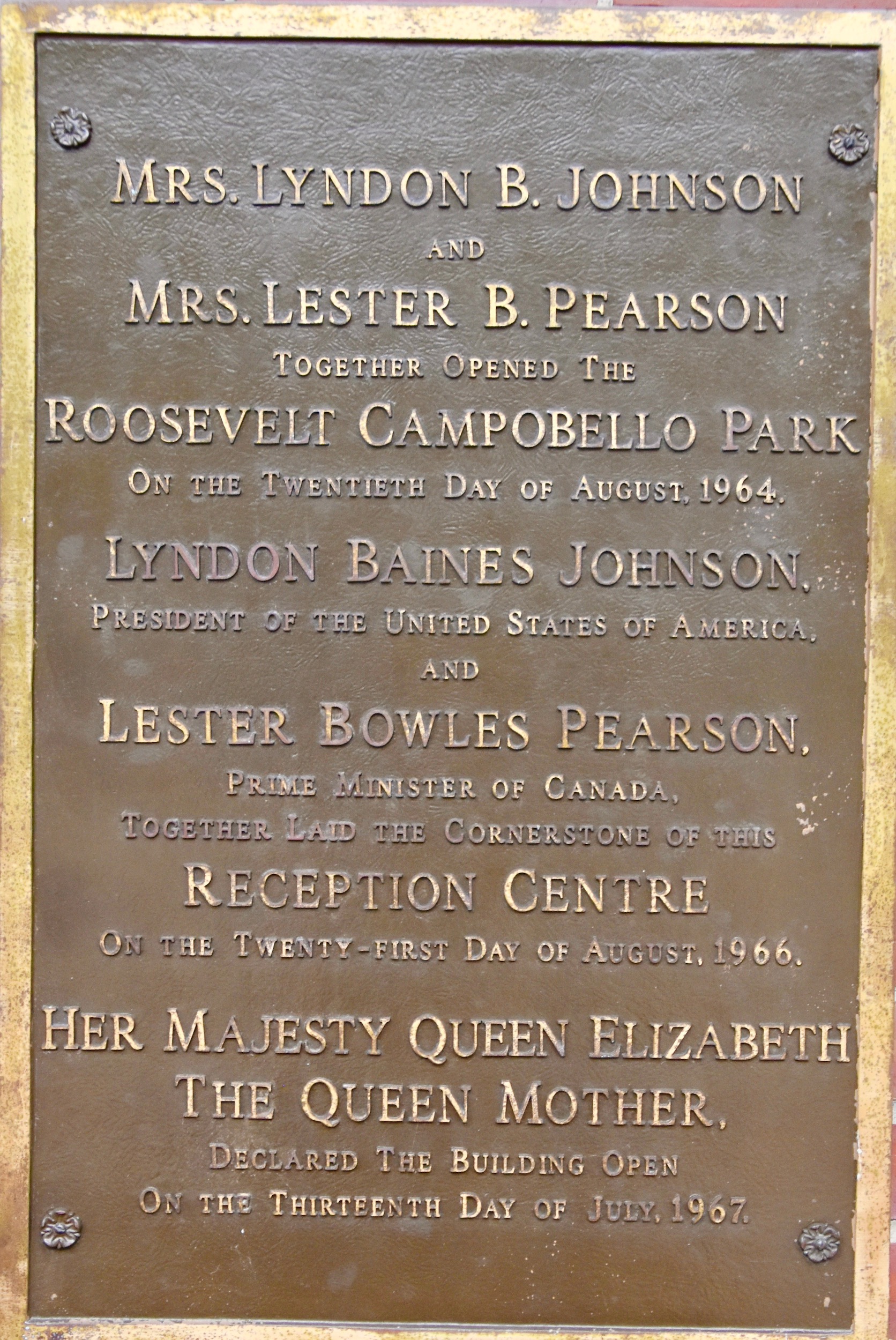
There is a pleasant surprise awaiting you at the Reception Centre – admission is free as are the guided tours. High on the wall as you walk in you will see this birch bark canoe which was made for FDR by Tomah Joseph a Passamaquoddy elder and life long friend of the President.

Roosevelt spent many hours paddling this canoe on the waters around Passamaquoddy Bay.
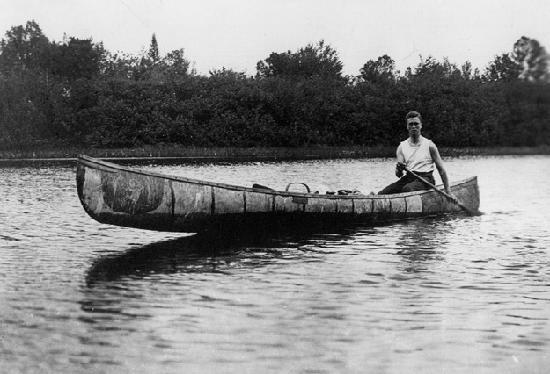
You should definitely take the time to watch the short film on the life and times of the Roosevelt family at Campobello before leaving the Reception Centre. It’s also a great spot to get your photo with FDR. Given the mask I won’t have any difficulty recalling when I visited Campobello.
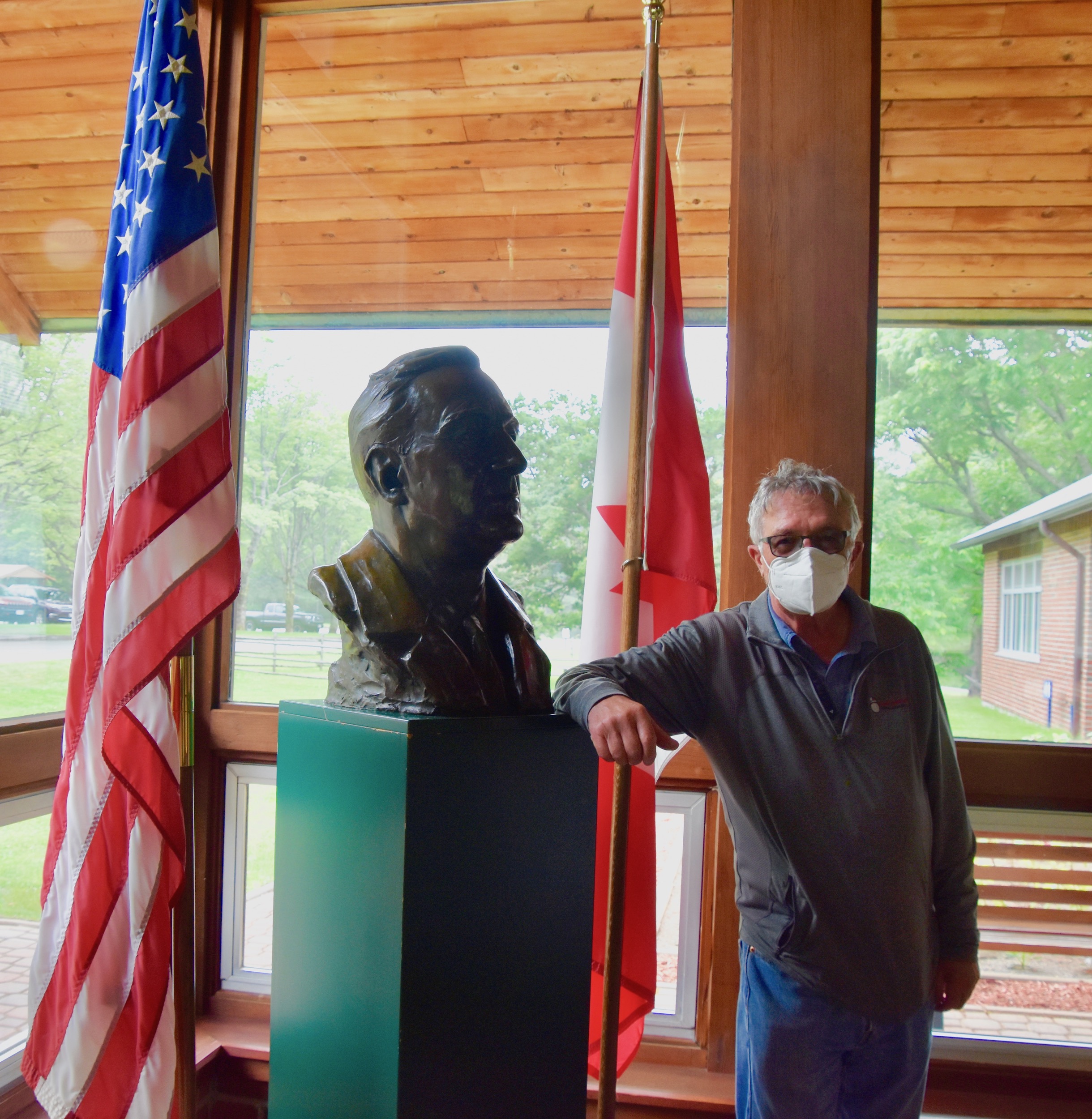
We left the reception Centre just in time to join the Just for FUN tour which lasts about an hour and provides a lot of fun facts about the Roosevelts that you might not learn just by touring the cottage. Here are Jocelyn Calder and Gerard Bourque our two guides on the FUN tour. They seemed to have as much fun guiding the tour as we were in listening to the stories they had to tell.
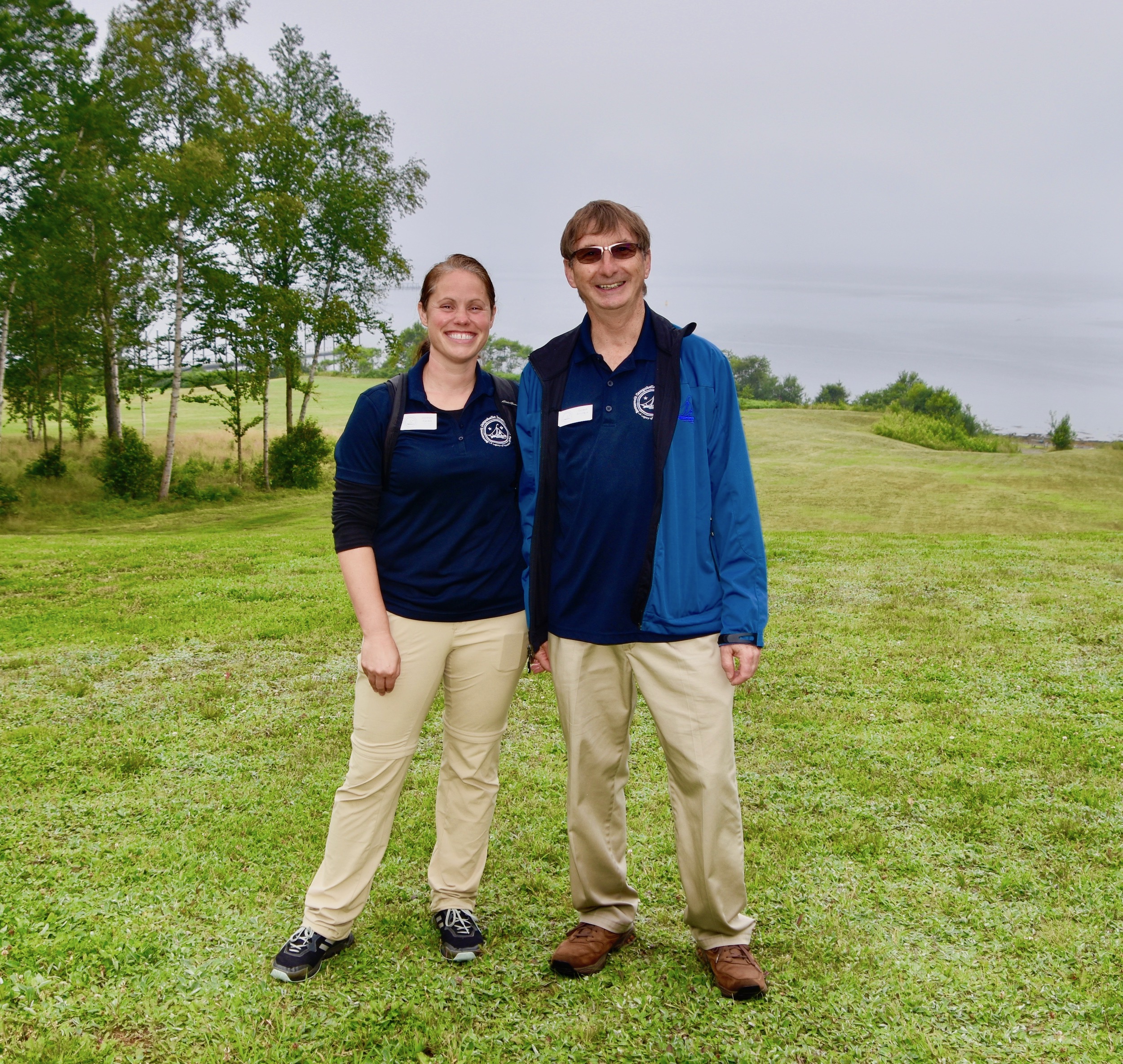
This is the site of the original Roosevelt cottage built by FDR’s father James in the early 1880’s. Franklin first came here as an infant and spent almost thirty summers here before moving into bigger property next door. I was very impressed with the milkweed flowers which are the staple of the monarch butterfly. It feeds on the nectar, lays its eggs on the branches and the caterpillars eat the leaves before pupating. What the milkweed gets out it, I don’t know.
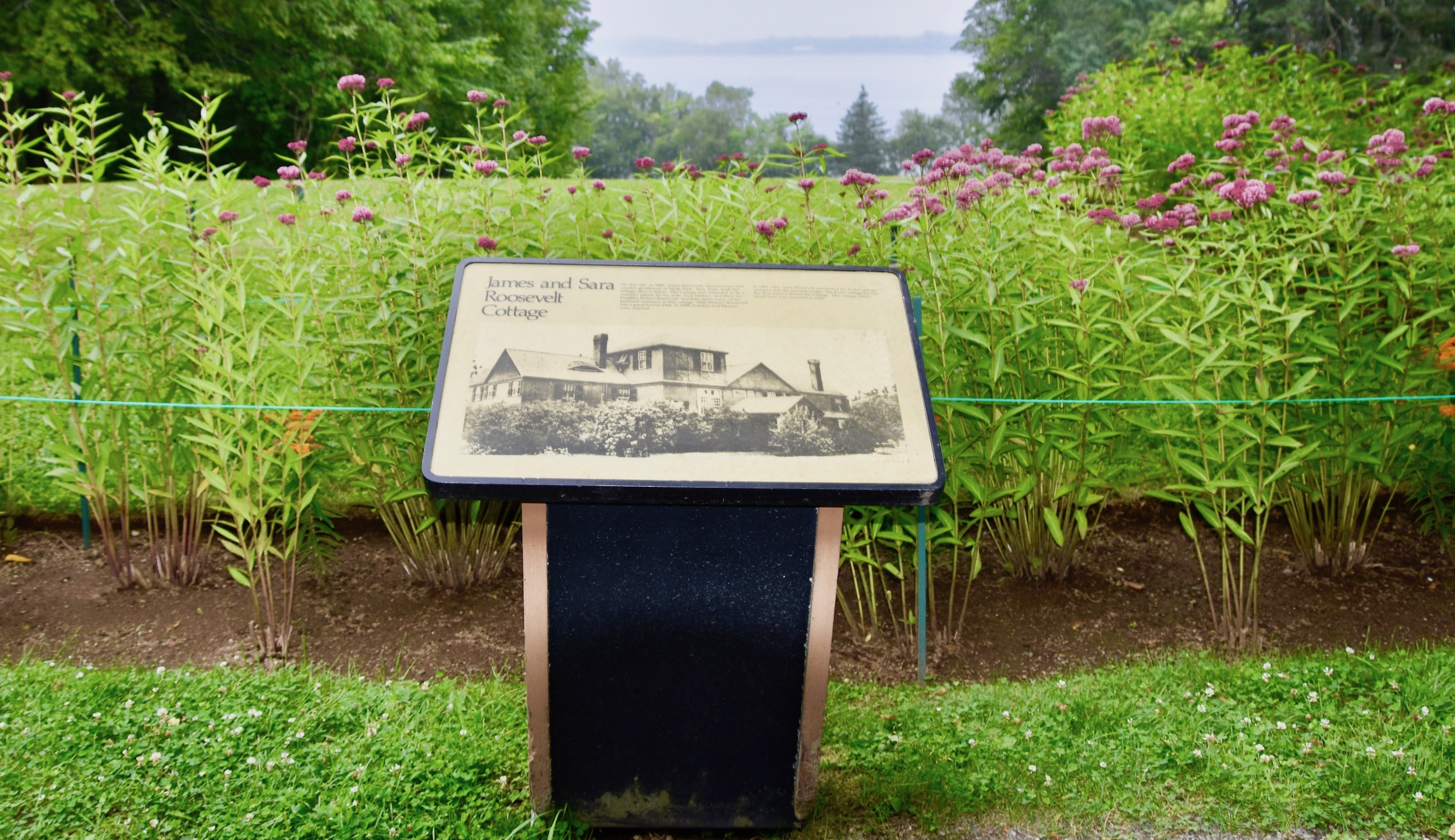
Hubbard Cottage
Next door to the Roosevelt cottage is the Hubbard cottage which was our destination for most of the FUN tour. How one could call this or the 34 room Roosevelt building a ‘cottage’ is beyond me. If this is a cottage just how big must the usual residence be?
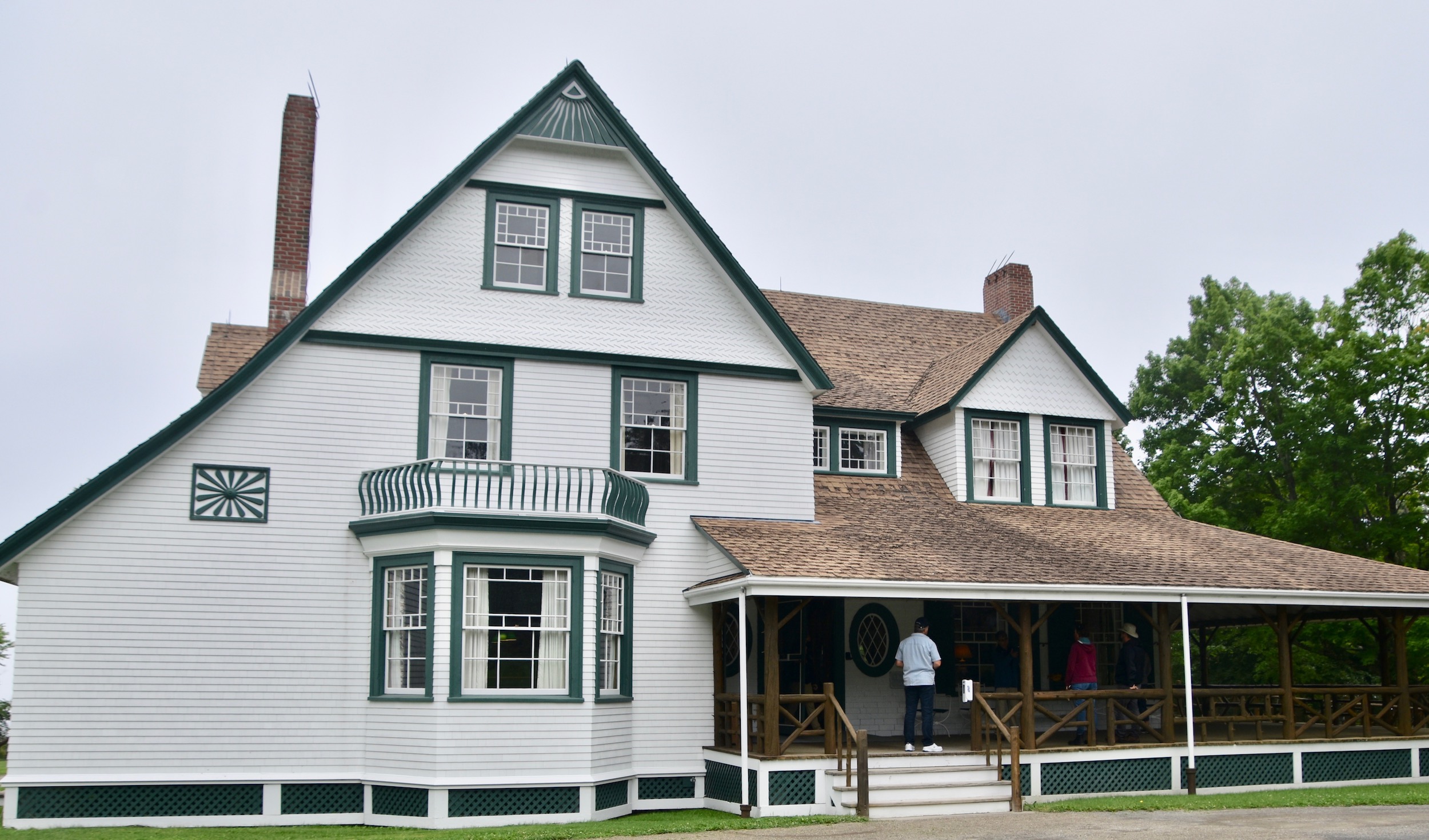
Our guides told us that the Hubbard cottage was known as party central by the Campobello rusticators. Apparently there was a lot of boozing, dancing and general carrying in this place.
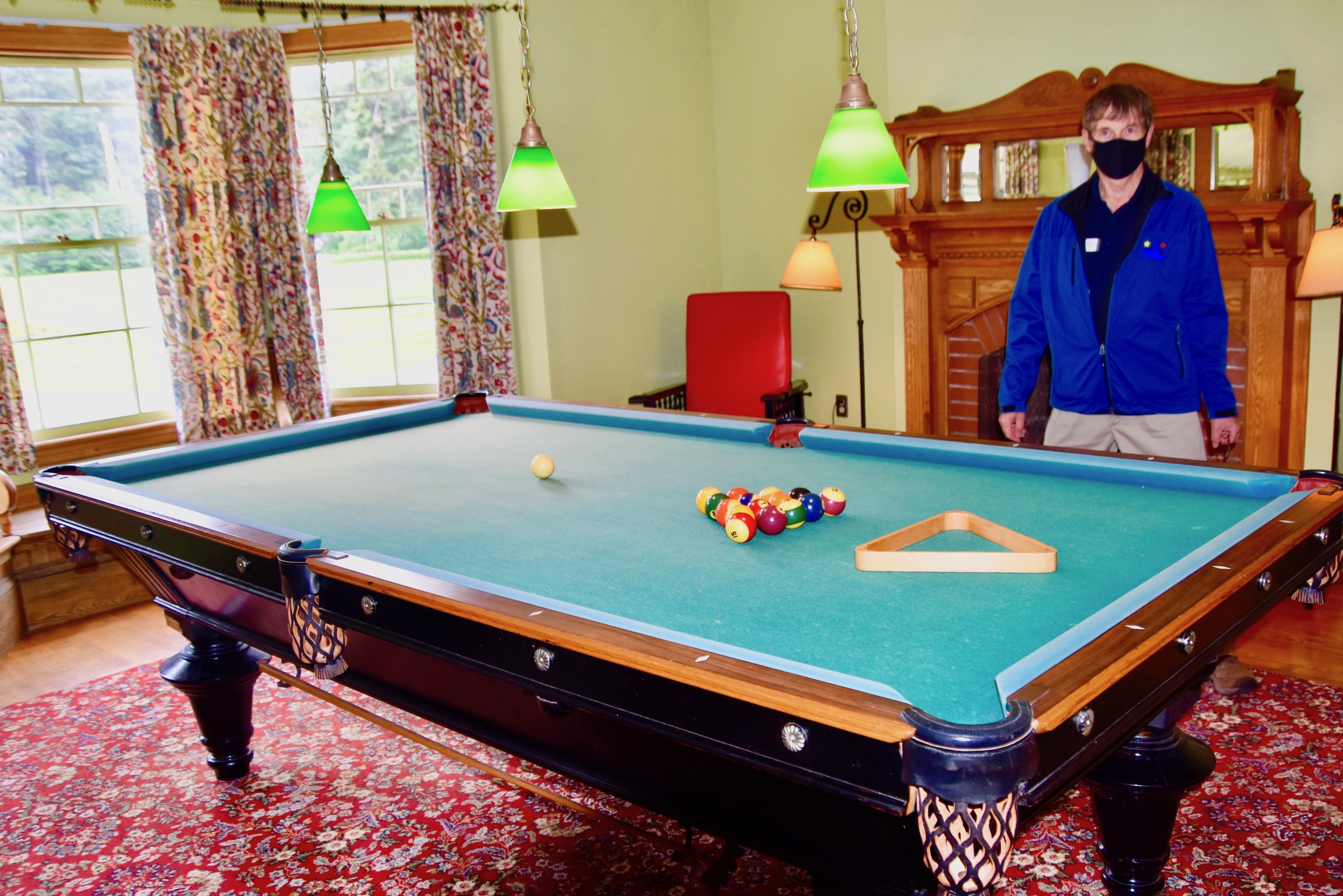
The men would gather in the pool room with their cigars and pool cues while the women would gather round the C. Bechstein piano, one of the most expensive brands in the world, and belt out a few tunes. This room that juts out from the back of the cottage was designed especially for this piano.
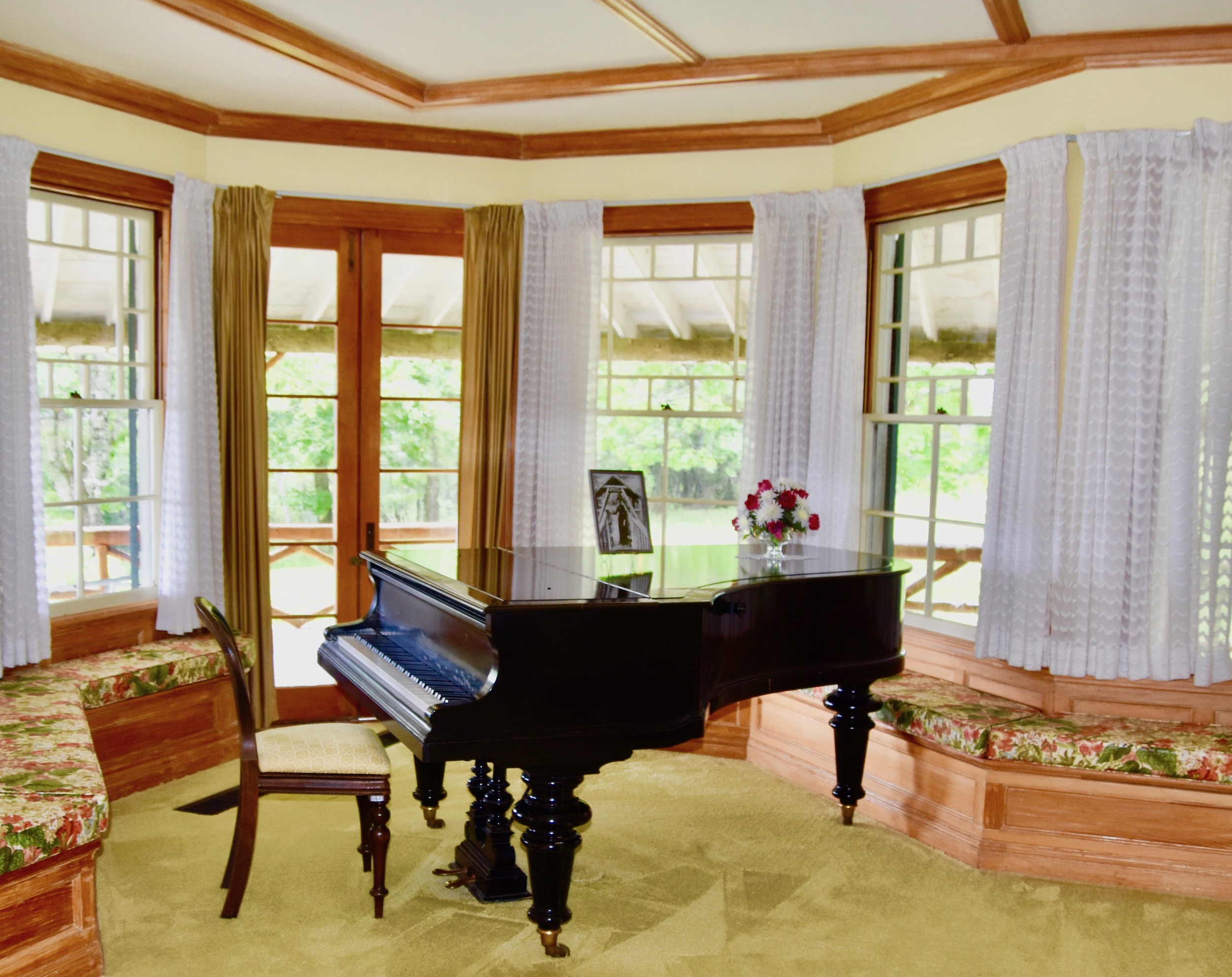
Next is probably the most famous room in New Brunswick that most people have never heard of.
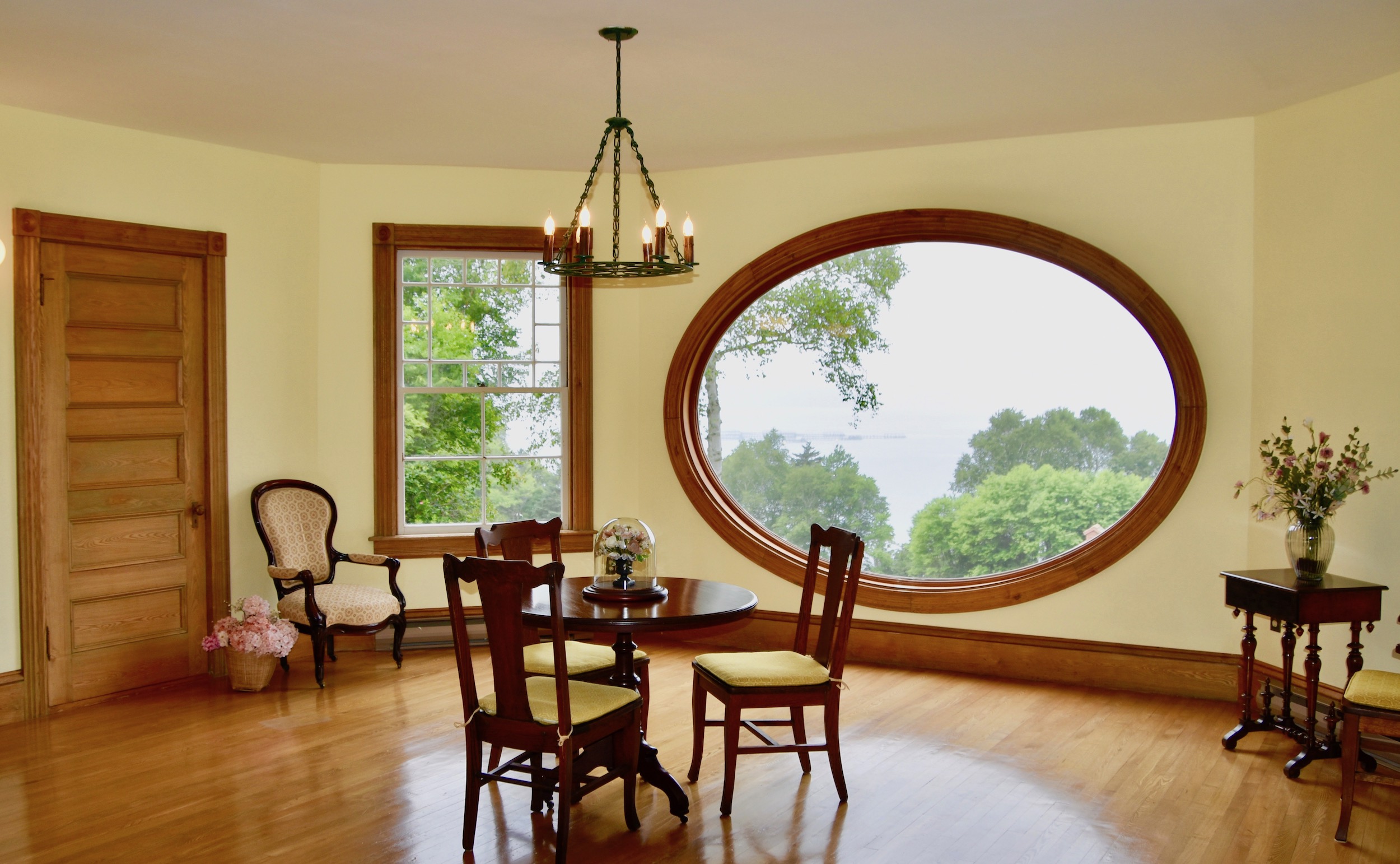
Entering this room without knowing what to expect, the oval window almost takes your breath away. It was imported from Europe and is unique. It acts as the backdrop for almost every wedding that takes place on Campobello and there is a common belief on the island that until you have your picture taken in front of this window you are not really married. Not wanting to risk that this might be true. Alison and I had Jocelyn take our picture as did all the other couples on the tour.
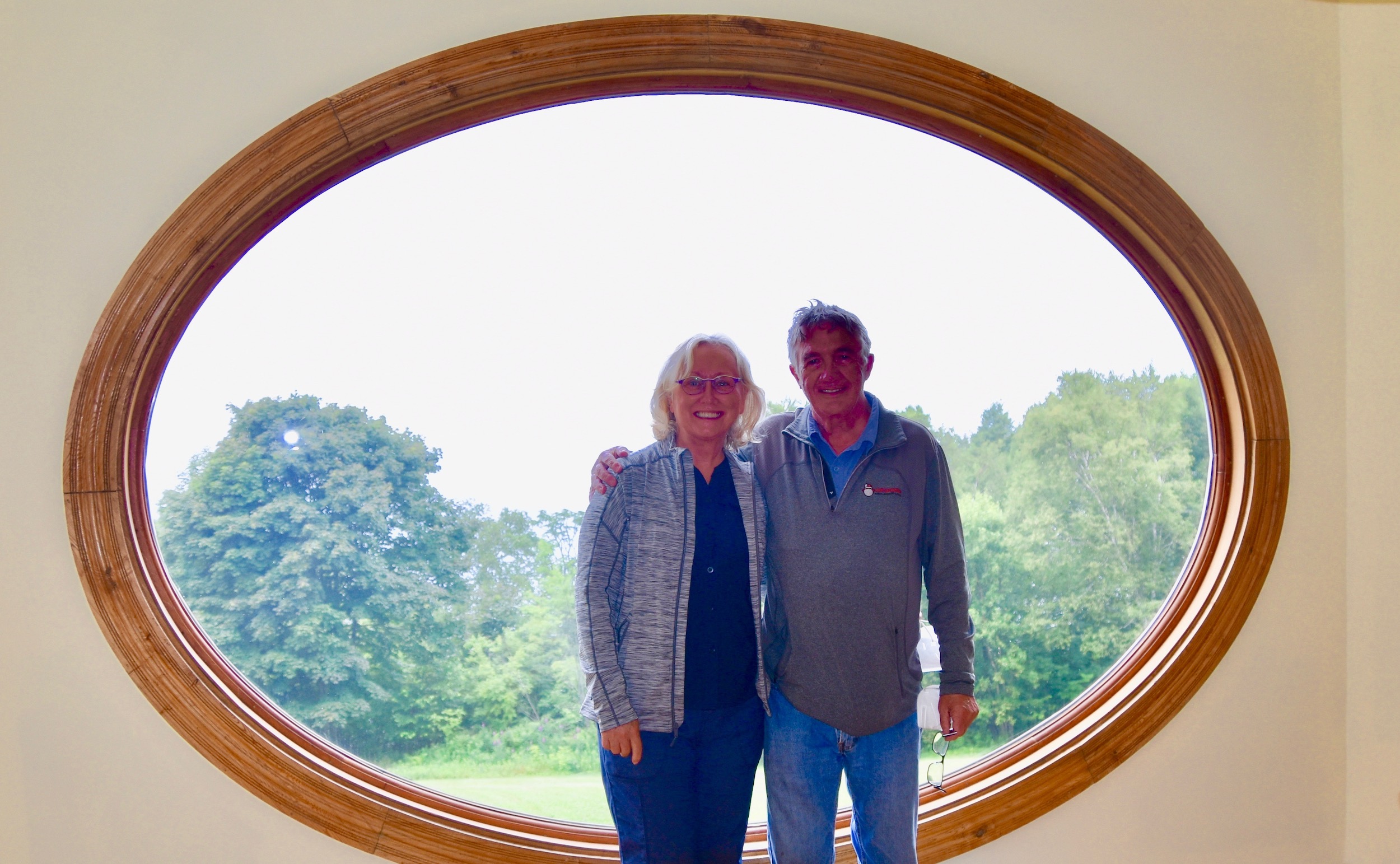
Roosevelt Cottage
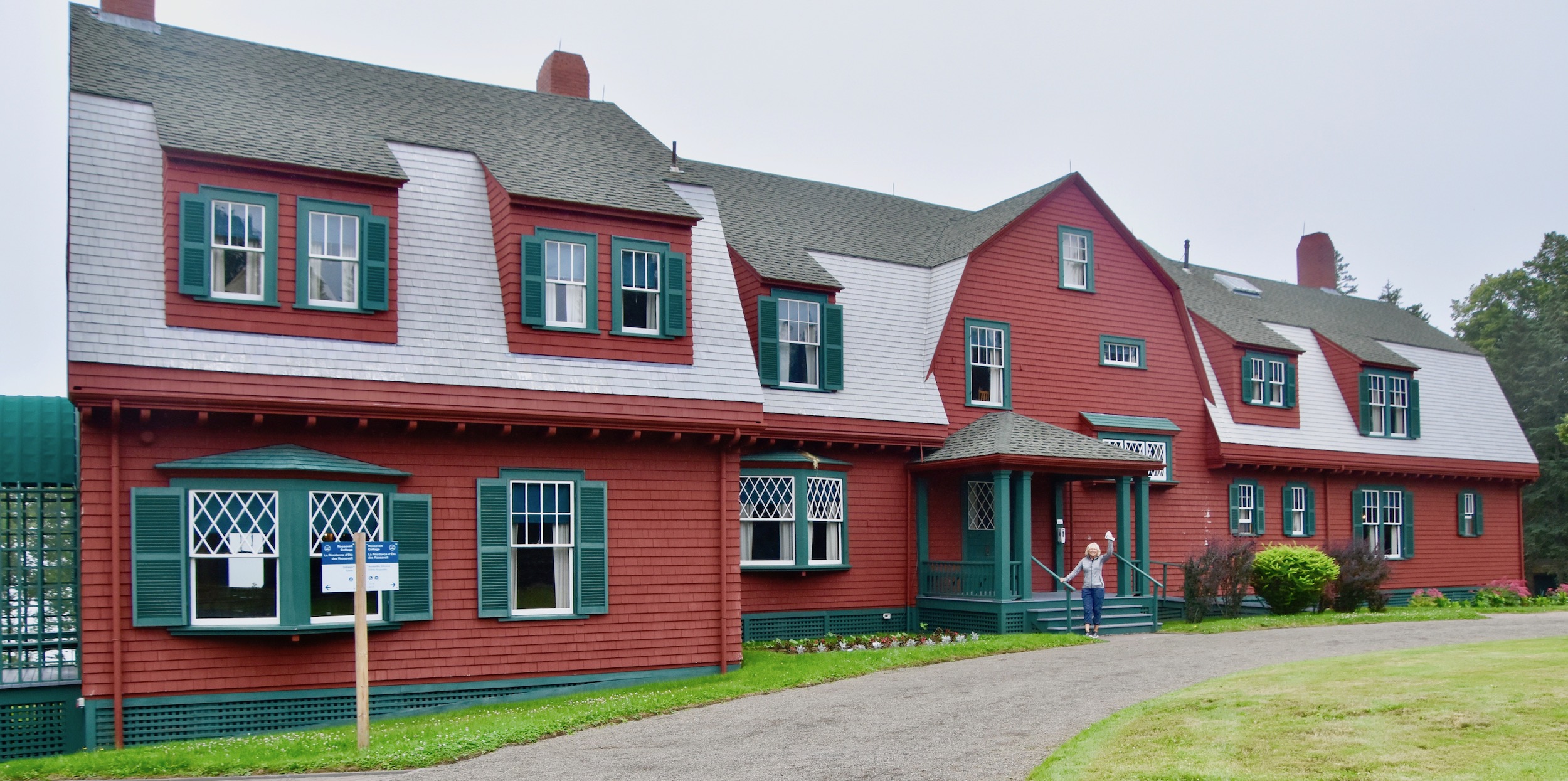
After the Just for FUN tour wrapped up we proceeded nest door to the Roosevelt Cottage. As noted it has 34 rooms of which 18 are bedrooms and six bathrooms. The Roosevelts not only had a lot of kids, but a lot of visitors as well. We were fortunate to be the only ones on the guided tour. All that is about to change on August 9th as the border reopens to American visitors many of whom consider visiting Campobello as a pilgrimage of sorts. What follows are the highlights of the cottage starting with the games room which is just off the entrance.
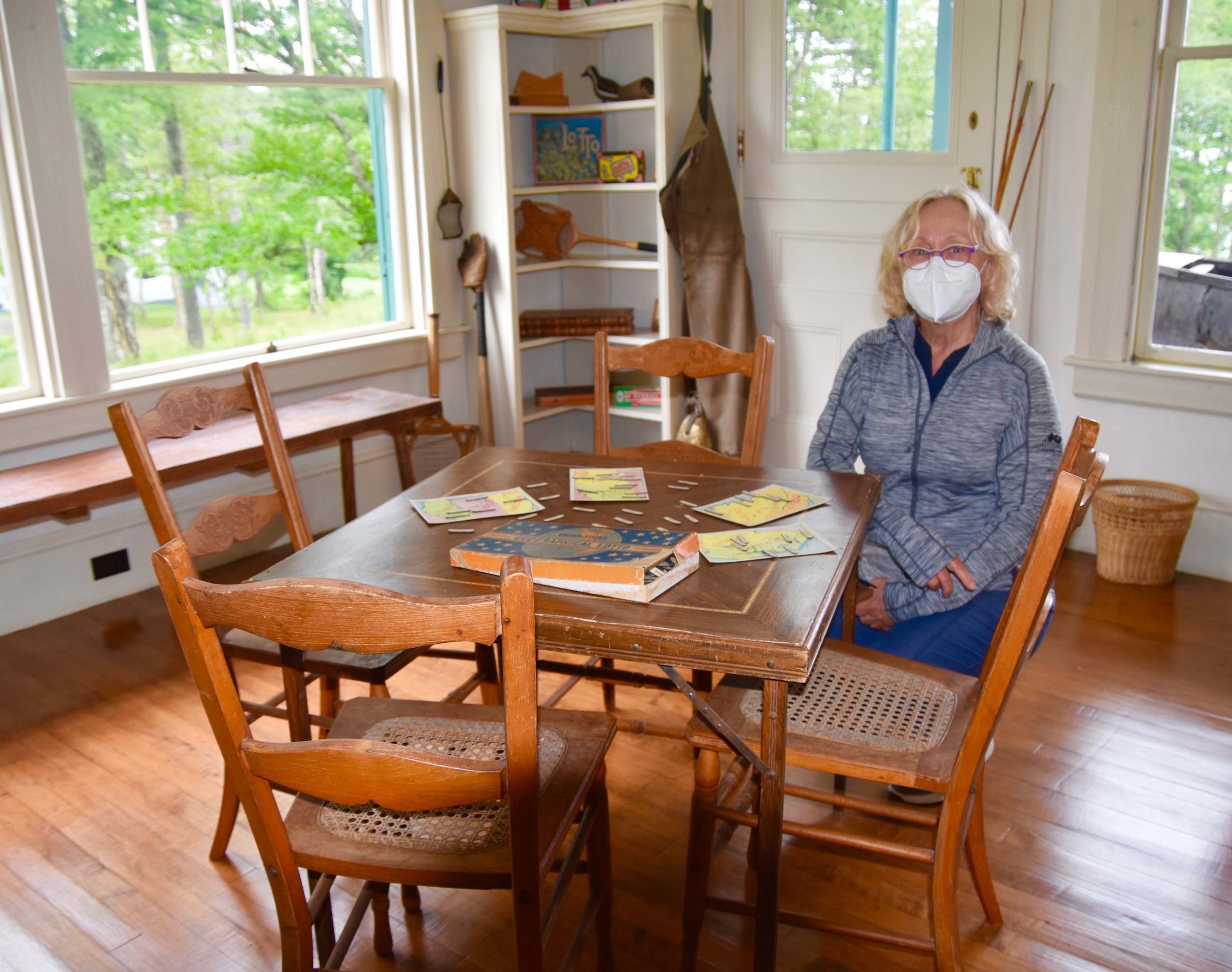
Next is an example of one of the six bathrooms with a large soaking tub and an English style toilet flusher.
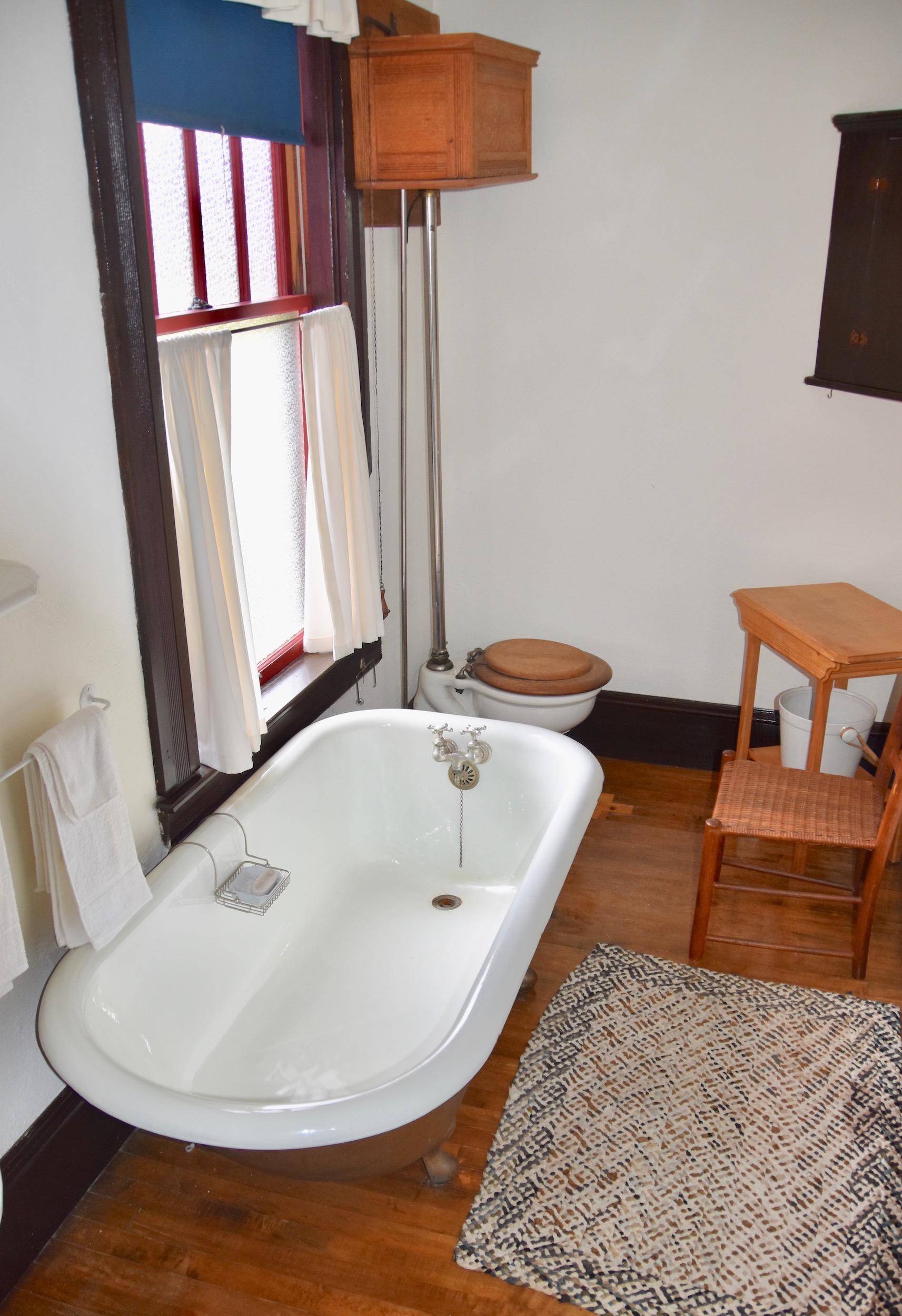
When the Roosevelts lived here there was no electricity initially so the electric lamp you would have been replaced by oil. This modest bedroom is typical of almost all the bedrooms with narrow beds and plain furnishings. This is Eleanor’s writing desk from where she corresponded with the great and not so great from around the world.
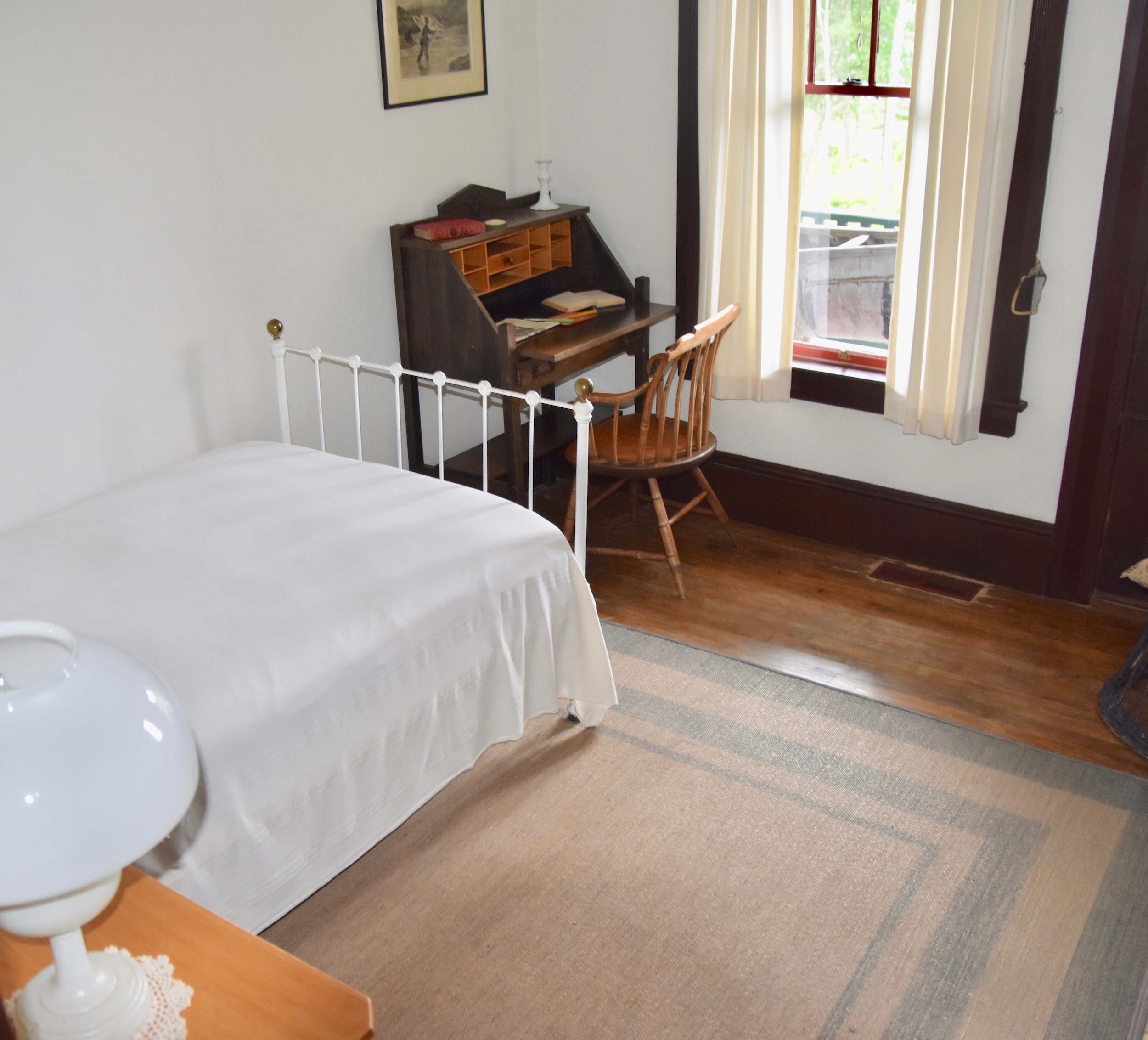
Besides making canoes Tomah Joseph was an Indigenous craftsman making ornamental items out of birch bark.
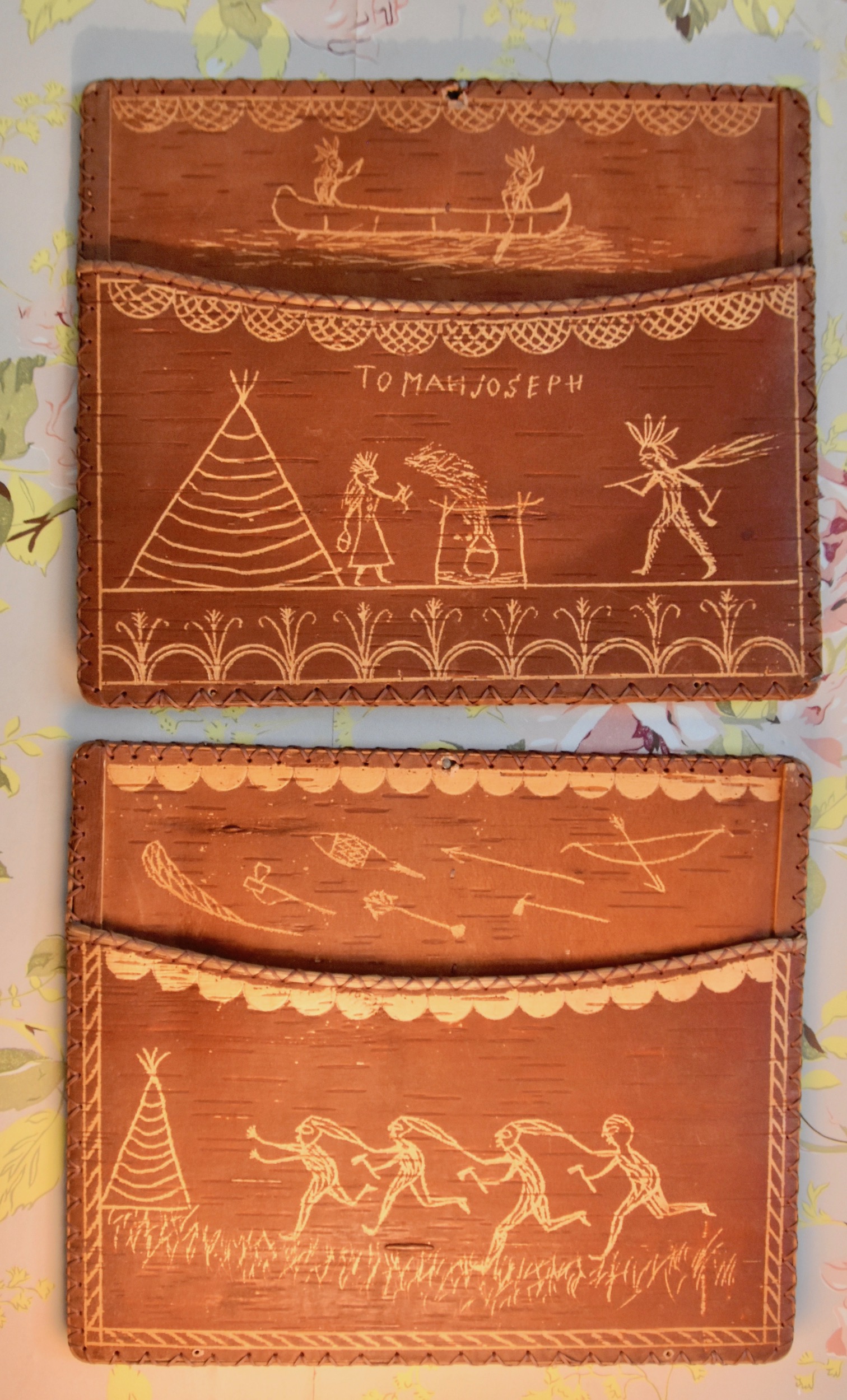
This is a birch bark log holder he made in 1910.
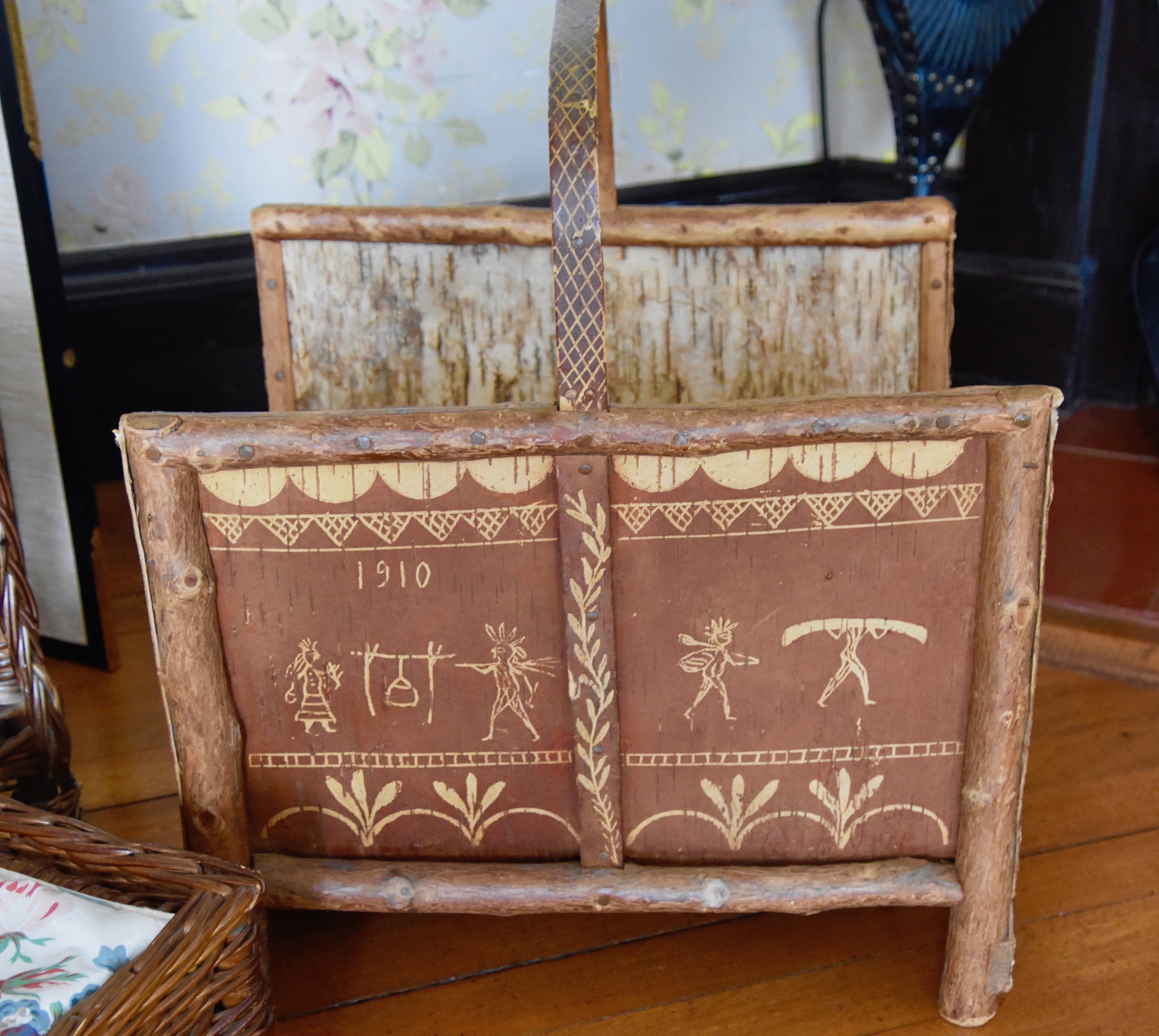
The living room where these pieces are found also has FDRs telescope.
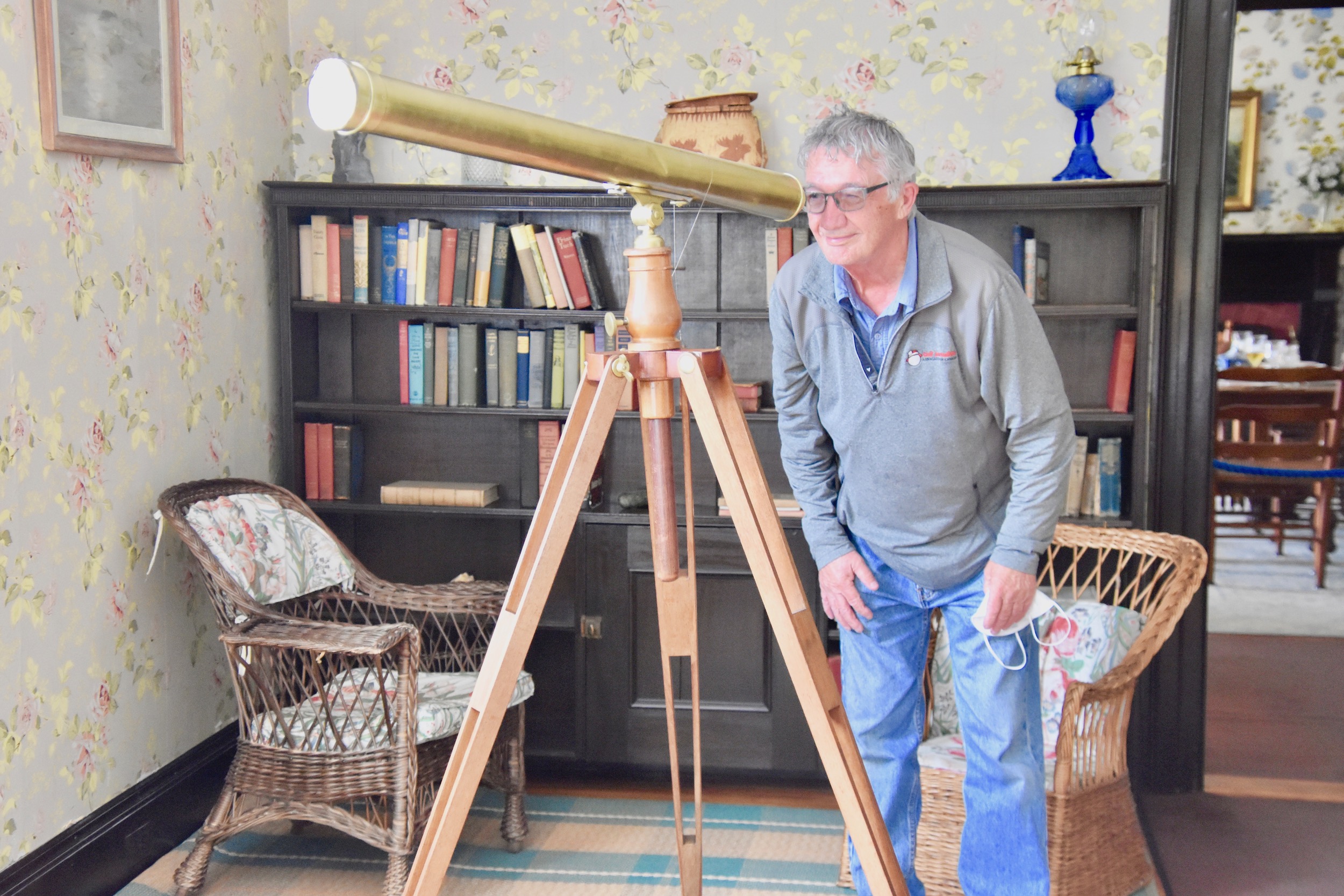
And his smoking paraphernalia including his signature cigarette holder. Sweet caporals or ‘sweet caps’ as most people called them were sold for over 125 years in Canada and are known for there very collectable cigarette cards.
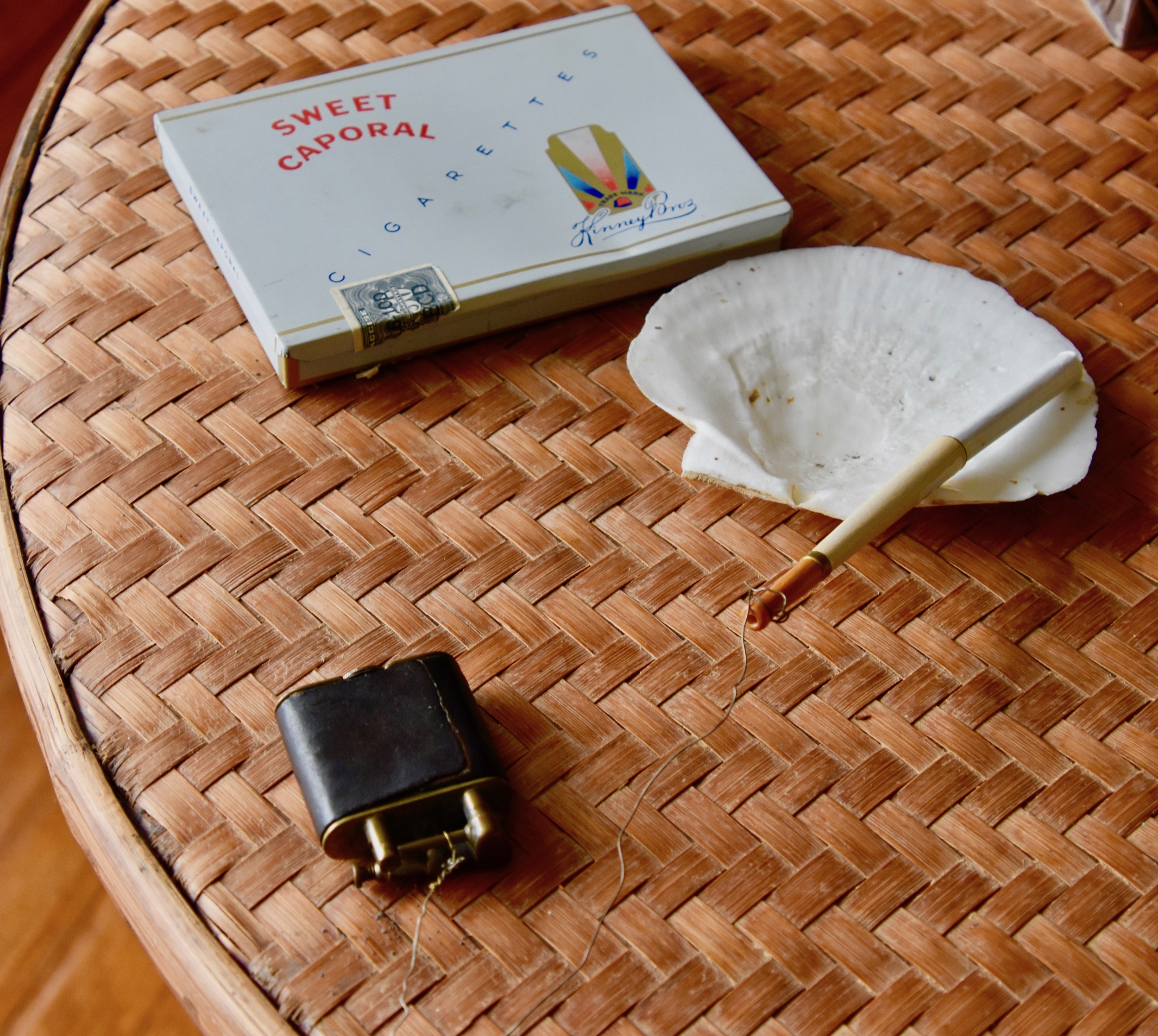
This is the dining room with a relatively austere dining table and chairs. Despite being wealthy there is absolutely nothing ostentatious about the Roosevelt cottage. The wall paper patterns are the same as the originals.
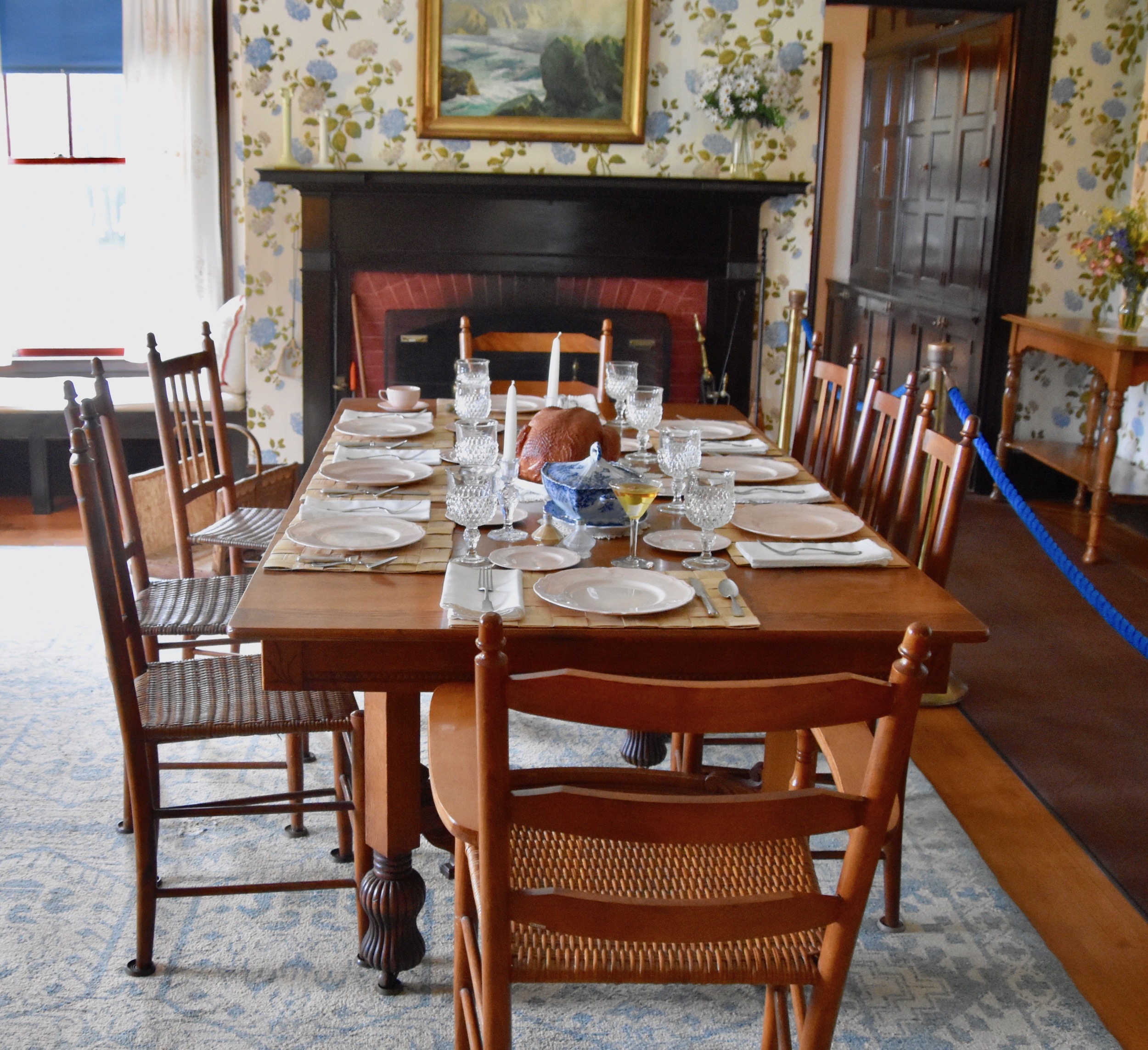
The kitchen features a Canadian made wood burning stove and a large metal trough like sink.
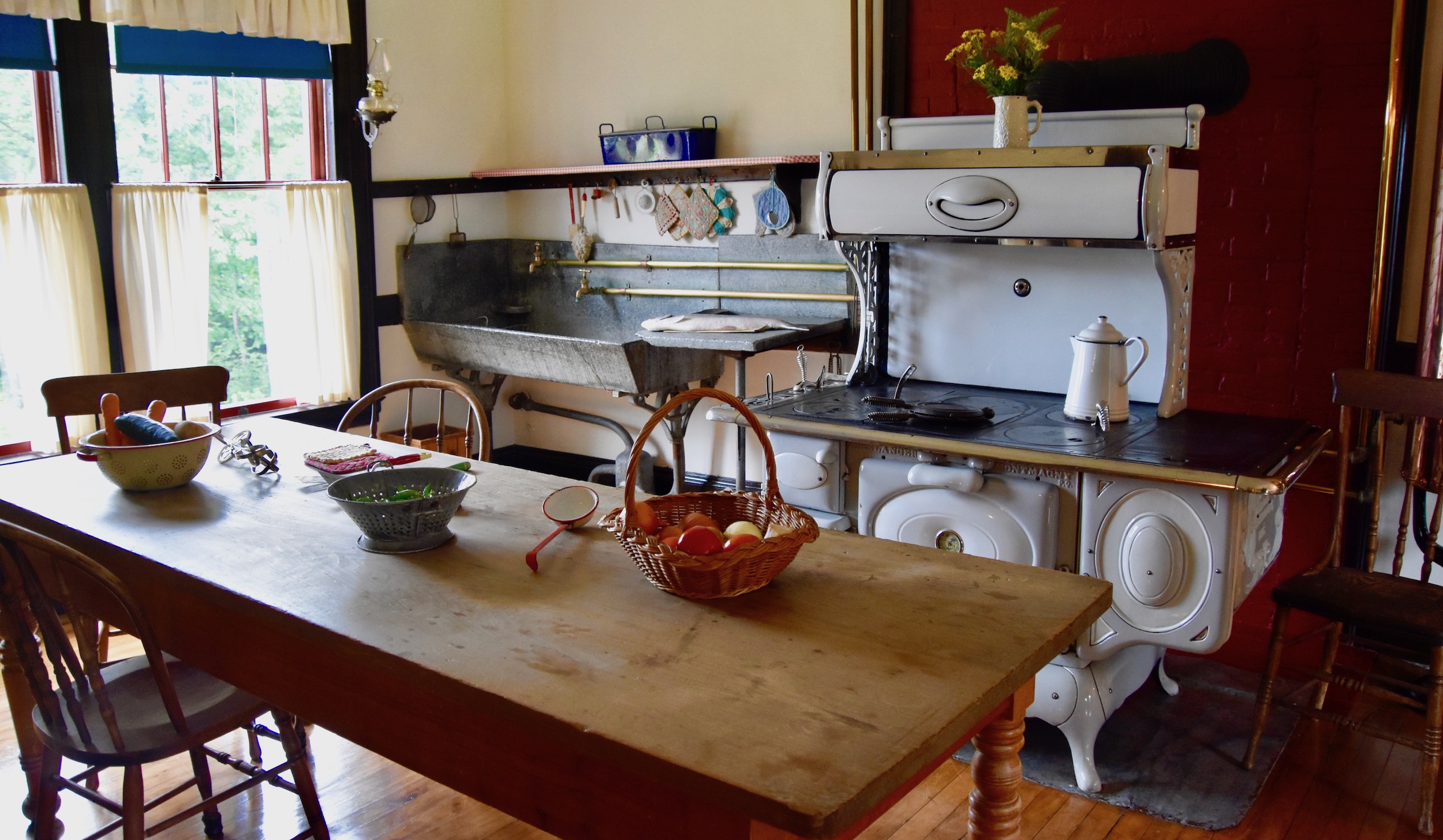
Off the kitchen is the laundry room with an old-fashioned clothes wringer and laundry tub along with flat irons that needed to be heated on the stove before being pressed into action.
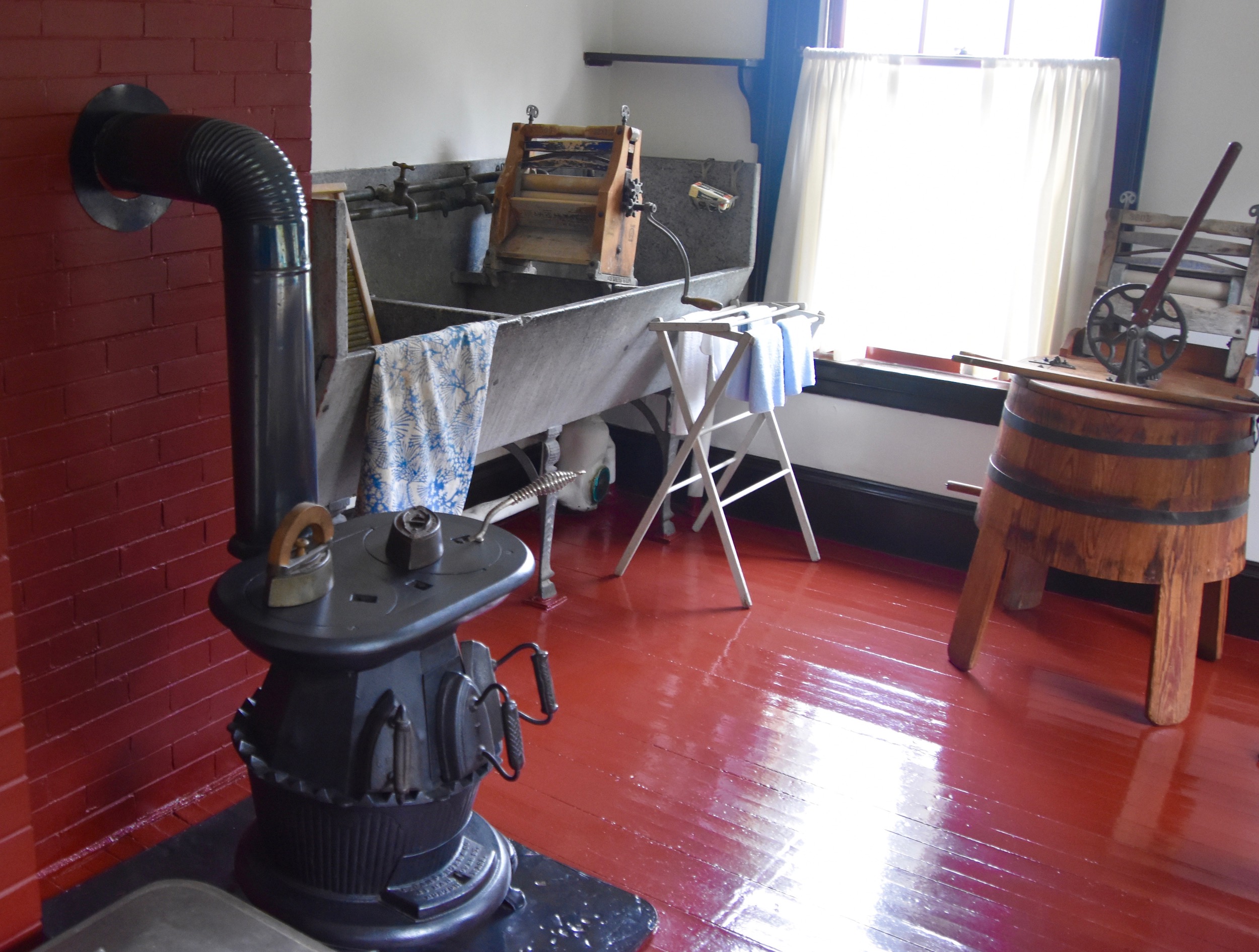
While fresh seafood and vegetables from the garden would have been available, this period of time was the heyday of canned goods and every respectable pantry would have been well stocked with them.
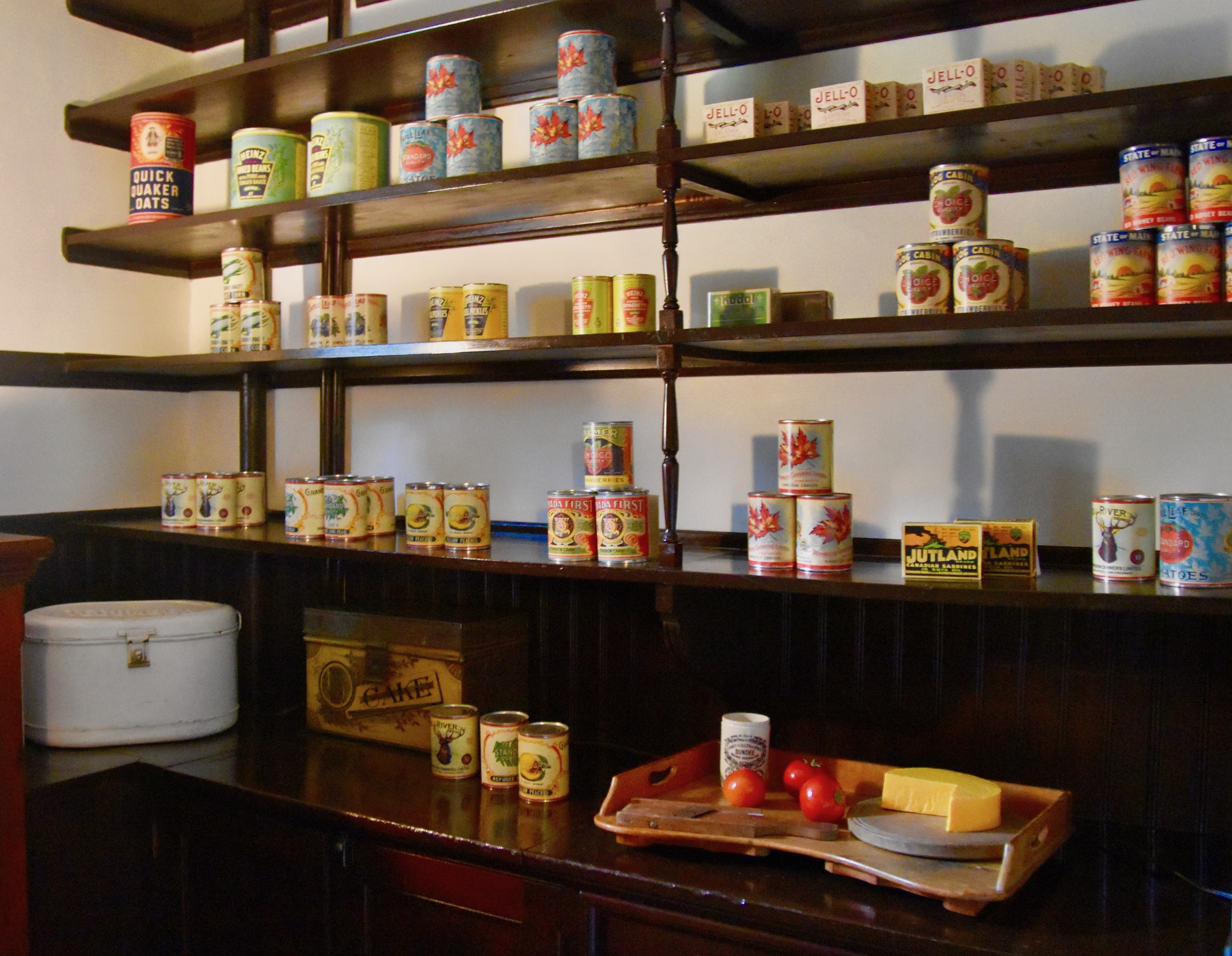
This was also the time when every home had a great variety of tinware and Campobello was no exception.
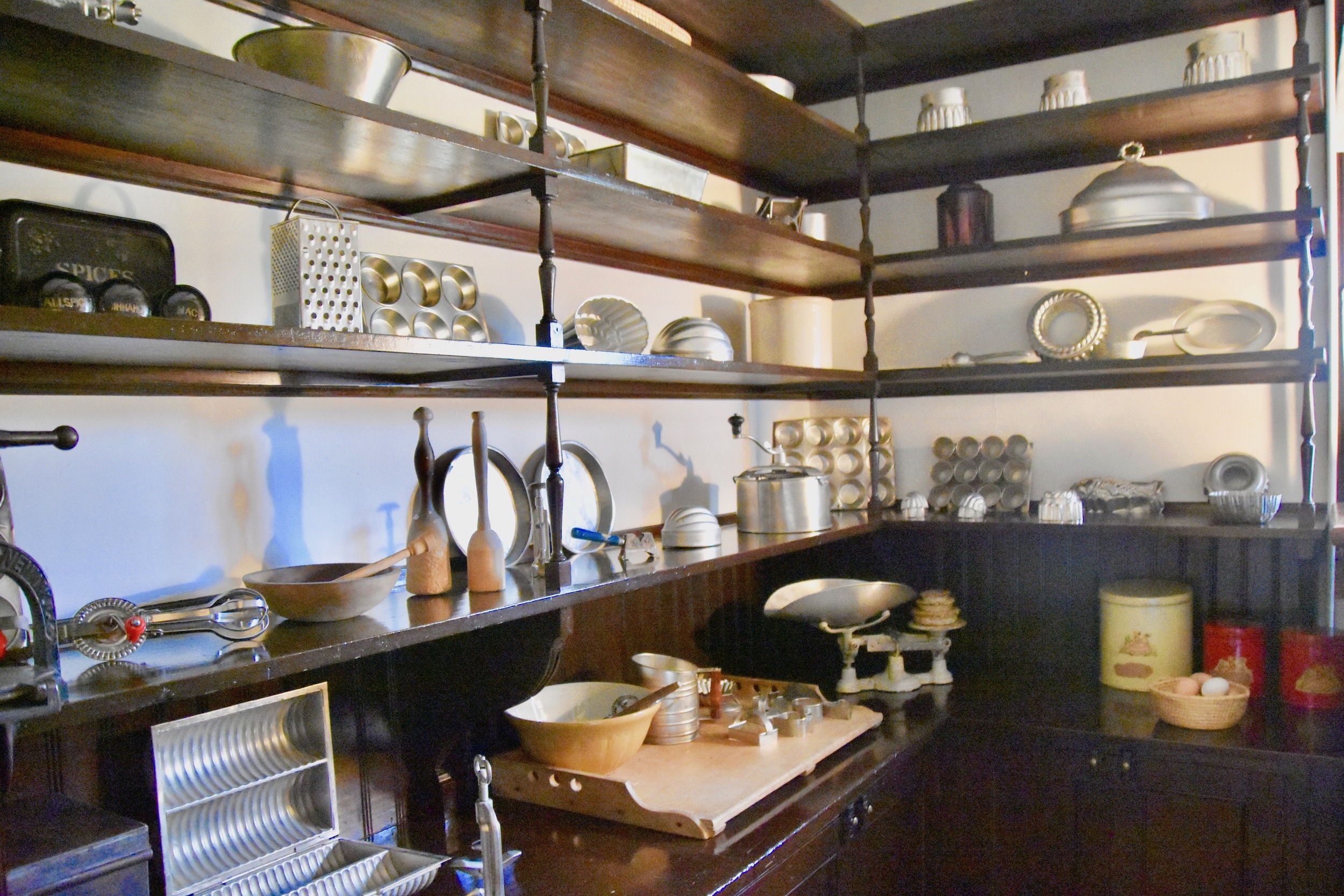
Going upstairs to the second floor you will find the children’s bedrooms with this bed being the nicest in the whole establishment.
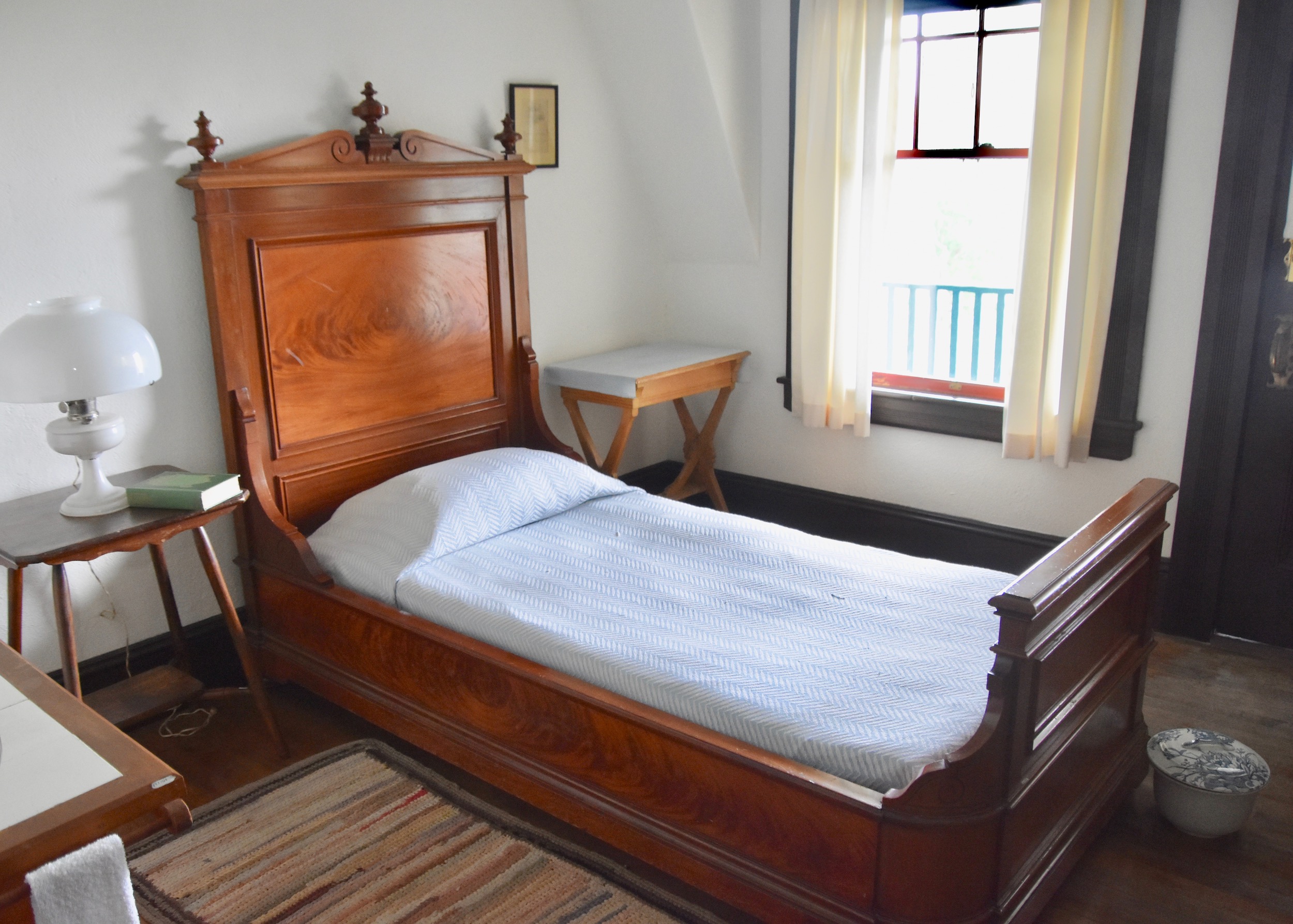
You will also find a small school room which I found a bit surprising because supposedly they were on summer vacation, but Eleanor was a stickler for education and didn’t want the little ones to forget all they had learned the previous semester.
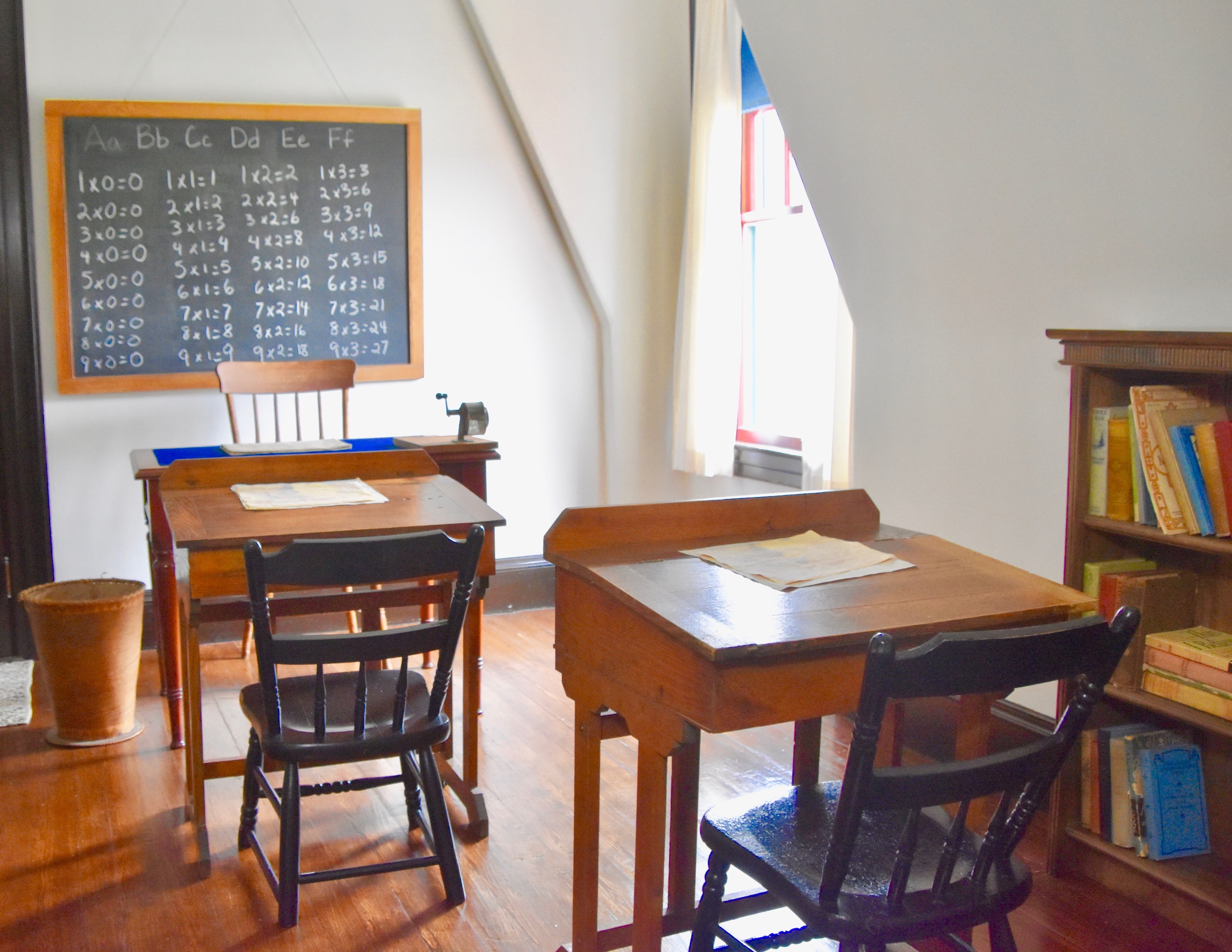
Lastly there is the play room at Campobello which fittingly is beside the school room, making sure that the Roosevelt children were not all work and no play.
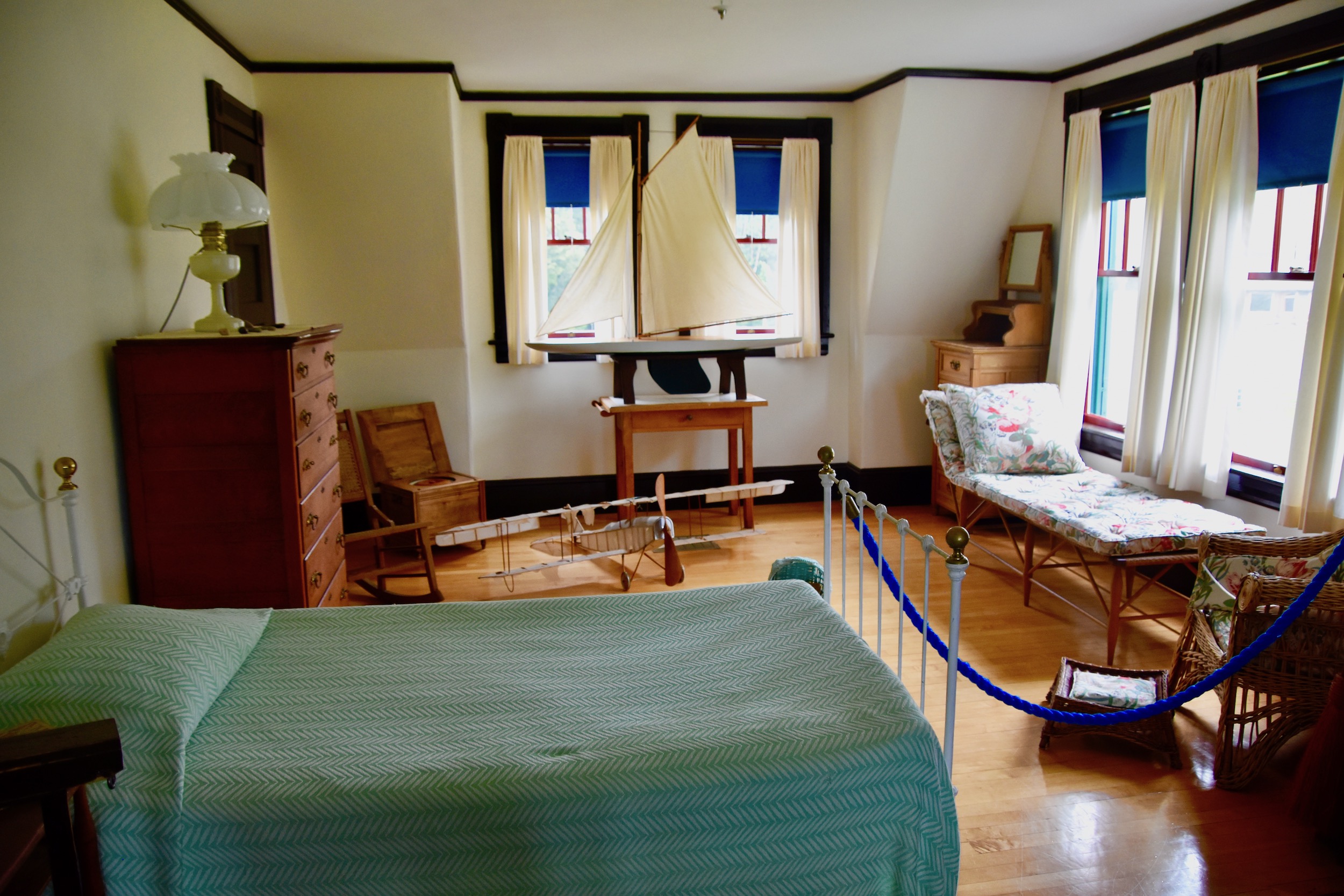
That concludes our tour of the Roosevelt Cottage on Campobello island. However, the visit is not quite over. We were just in time to hop in the car and driver the short distance to the Adams cottage which is where high tea is being served this year while the usual site, the Wells-Shober cottage is undergoing reservations. This event is called Eleanor’s Tea with the life and times of Eleanor Roosevelt described by the hostess. It was a lovely way to end our visit.
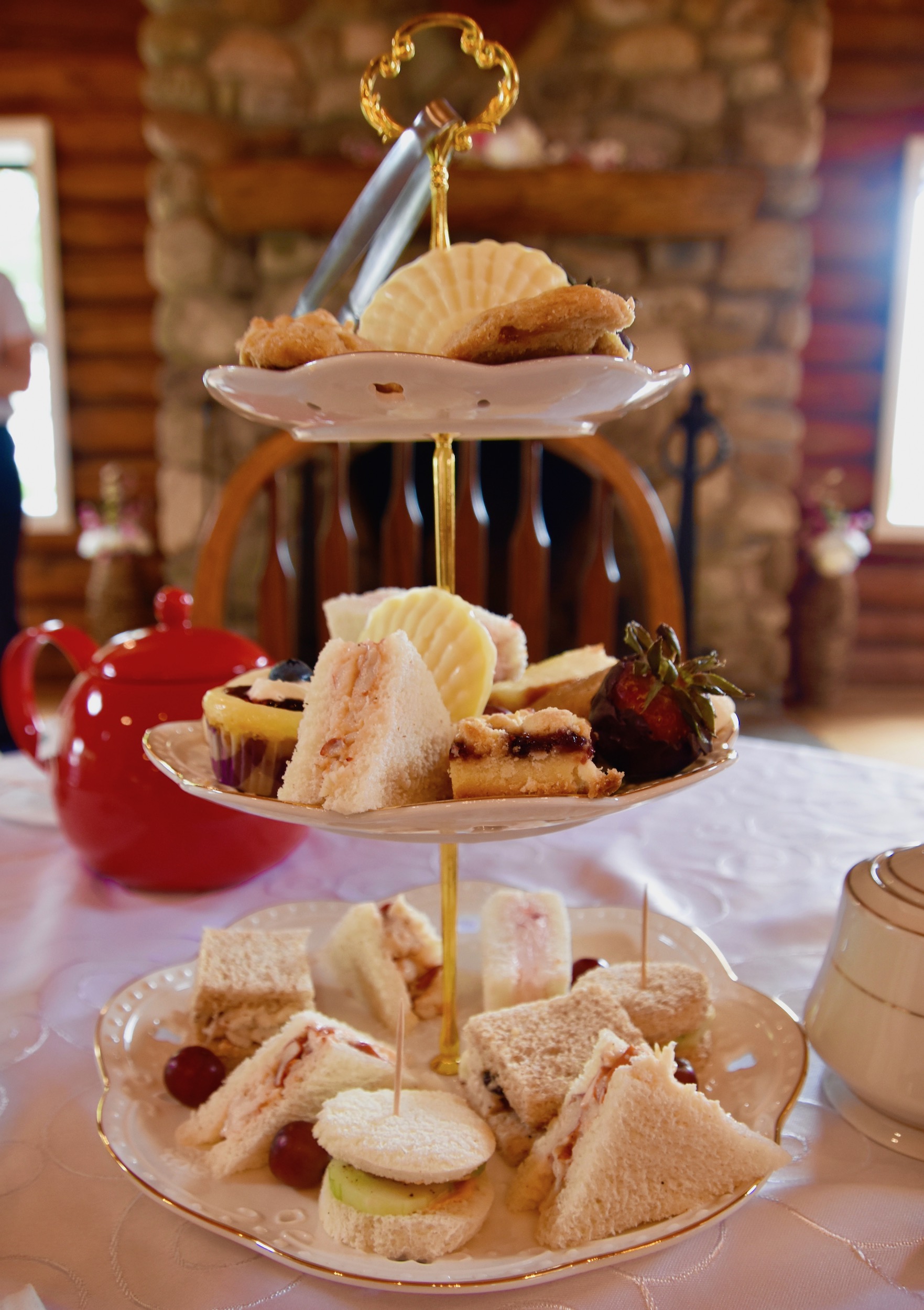
I strongly suggest that you check out nearby Herring Cove Provincial Park where you will find this lovely vista.
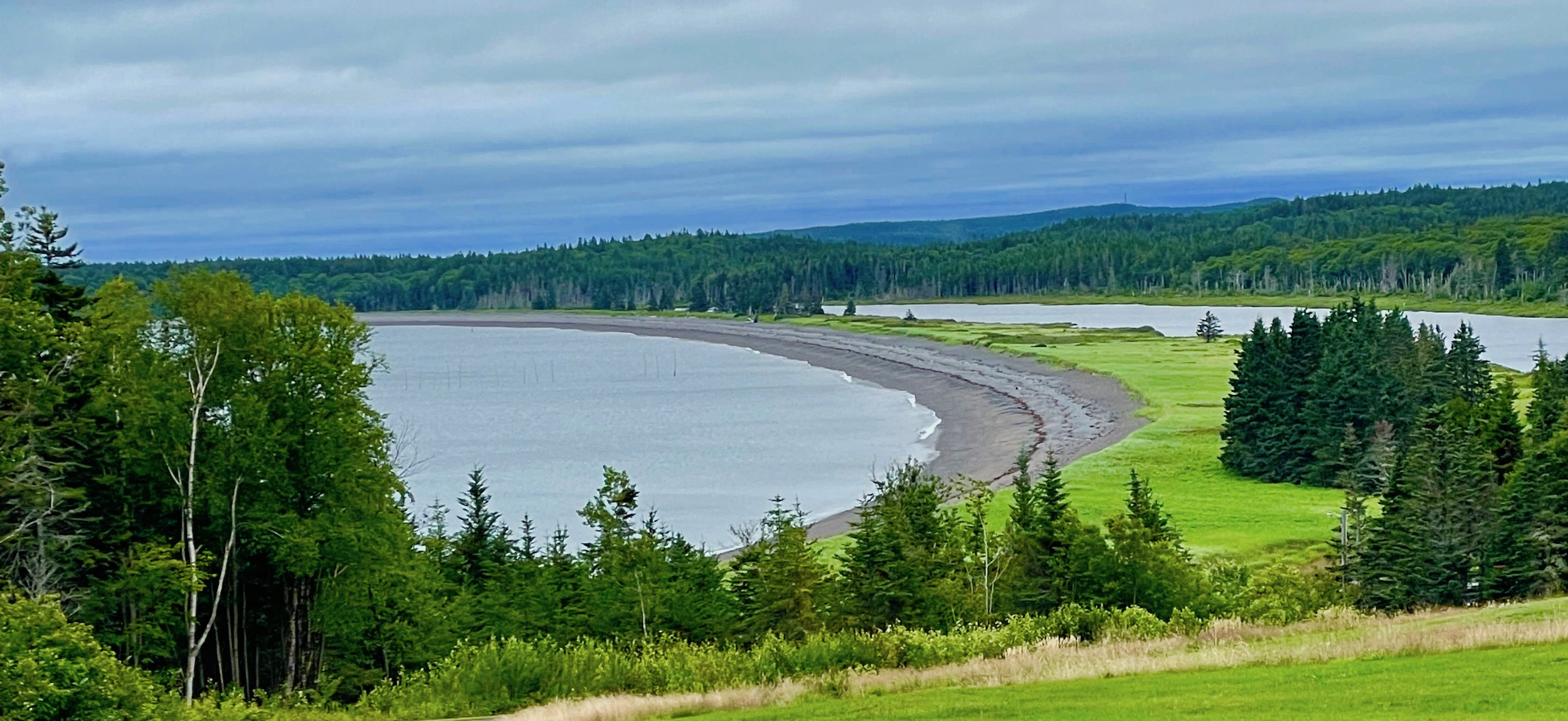
If you are a golfer then definitely set time aside to play the nine hole Herring Cove Golf Course which is the only one on the Fundy Isles. It’s surprisingly difficult and in very good condition.

If you are not a golfer you should still drop into the restaurant at the course which has excellent home cooking. This vegetable barley soup and BLT was just the right thing for lunch after playing the course.
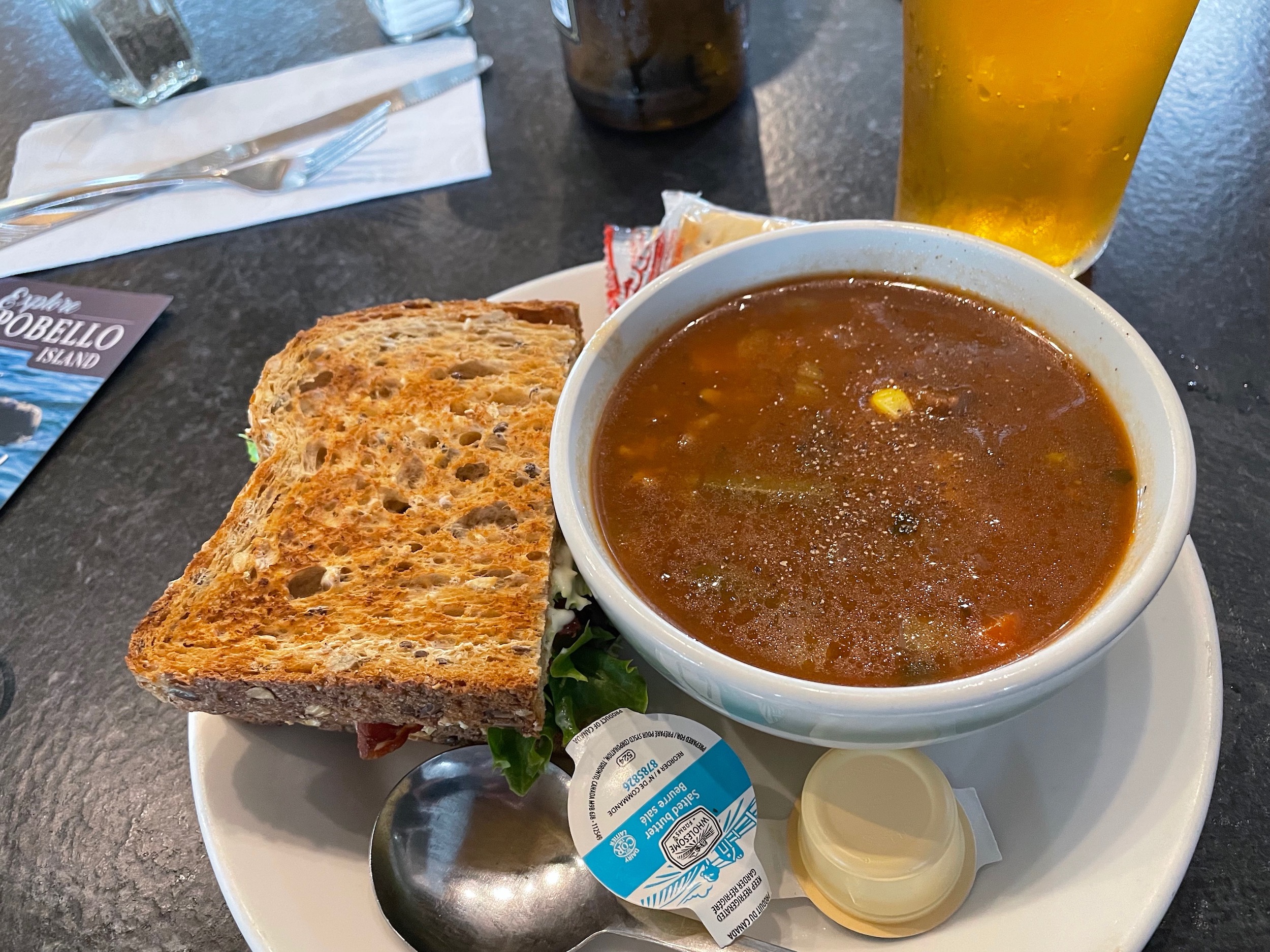
I hope that this post has instilled in you a desire to visit beautiful and historic Campobello Island as soon as you can.

